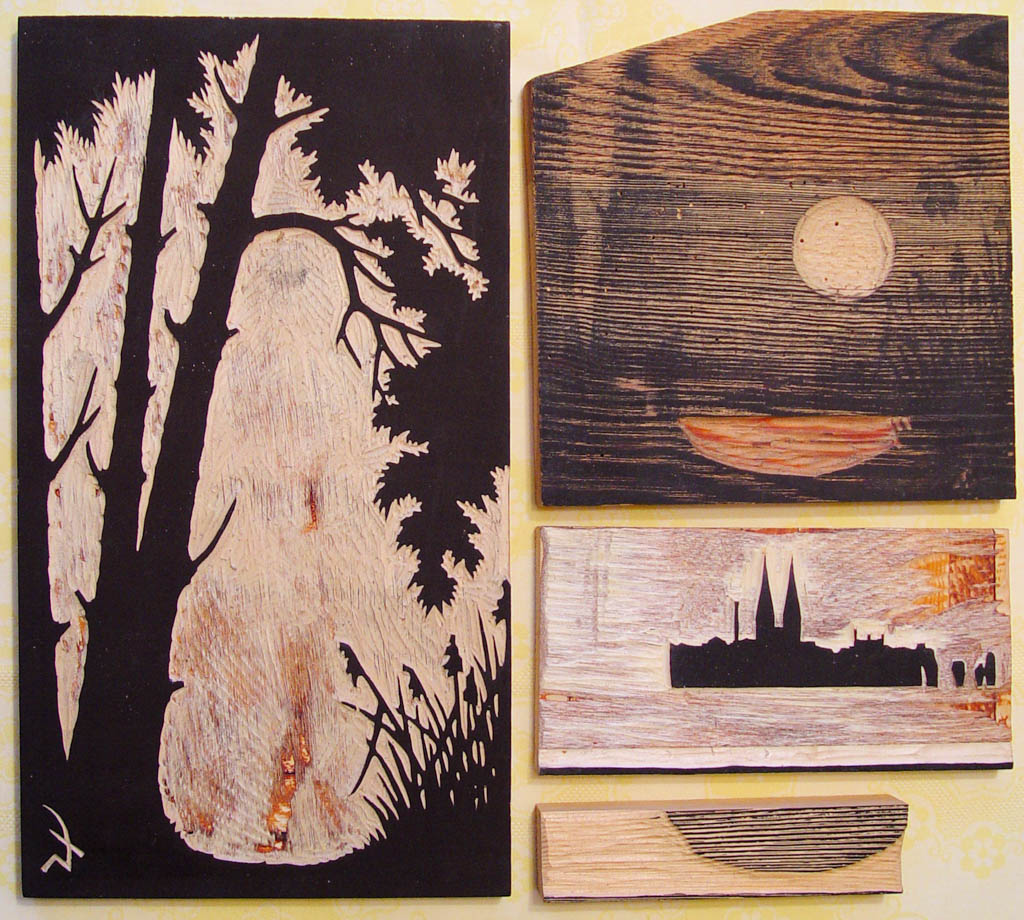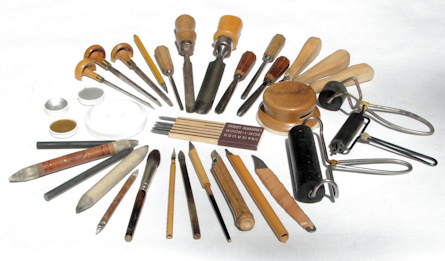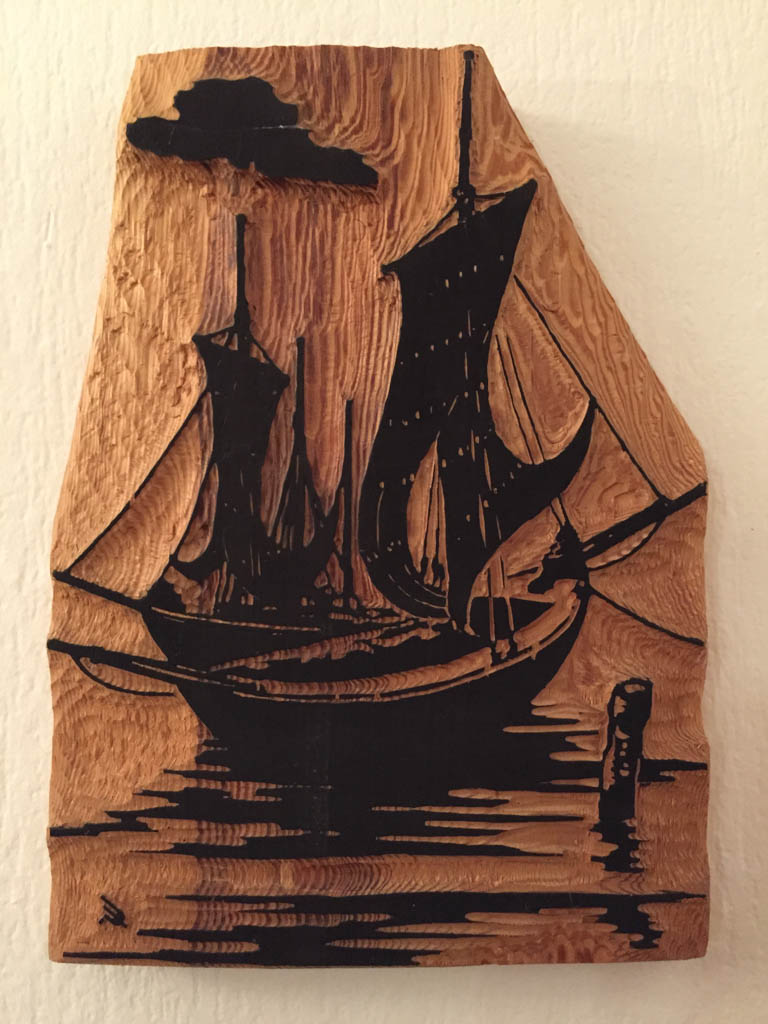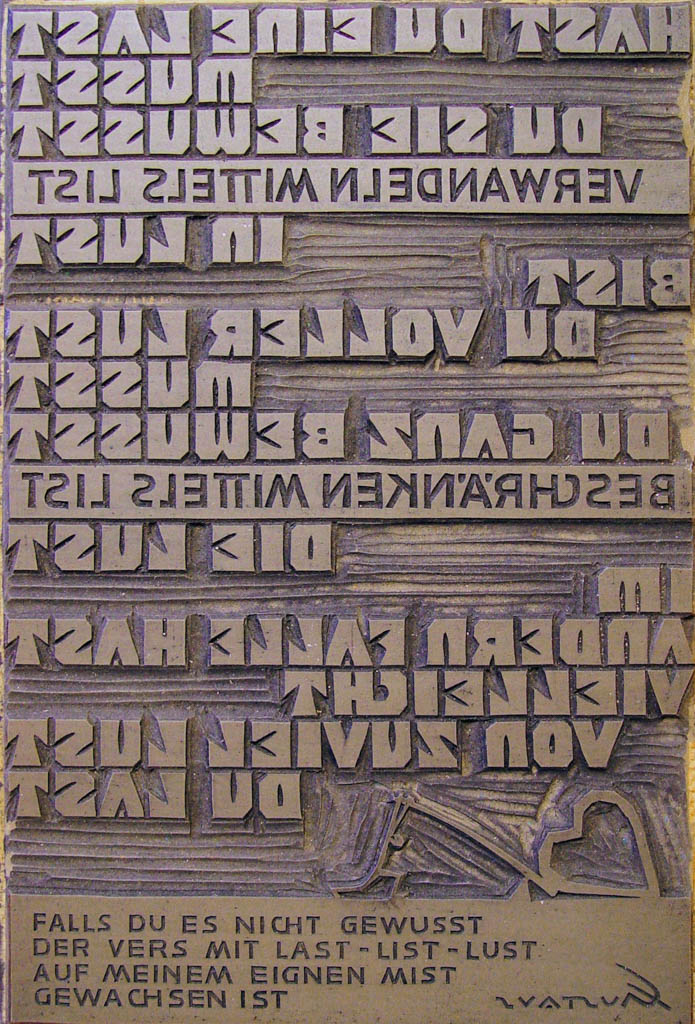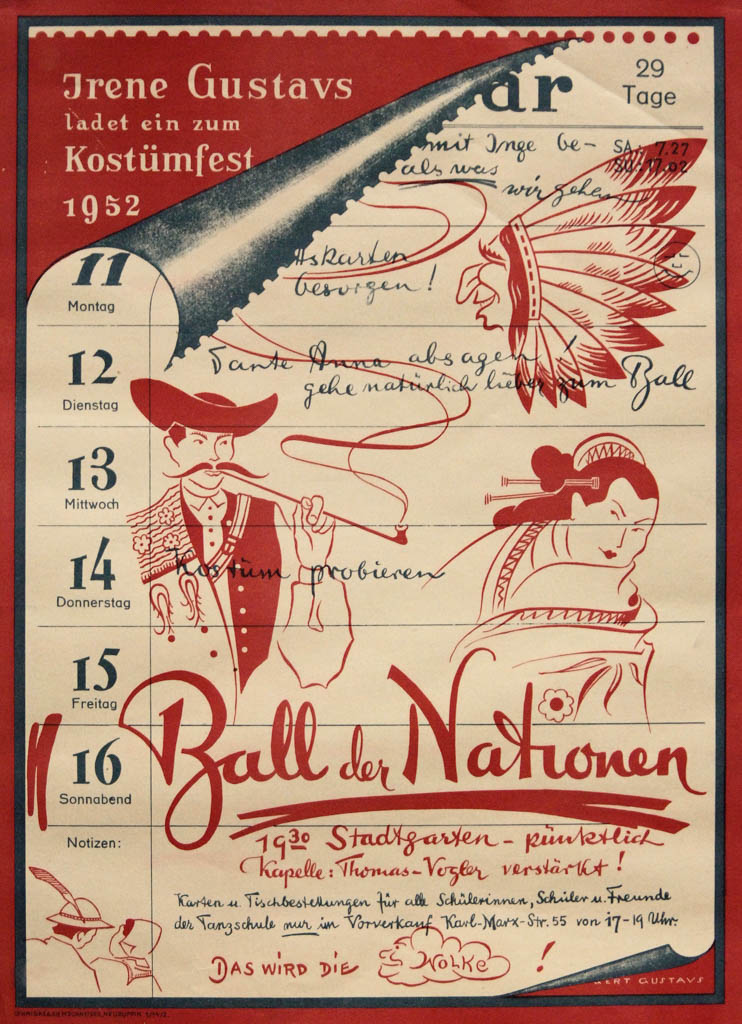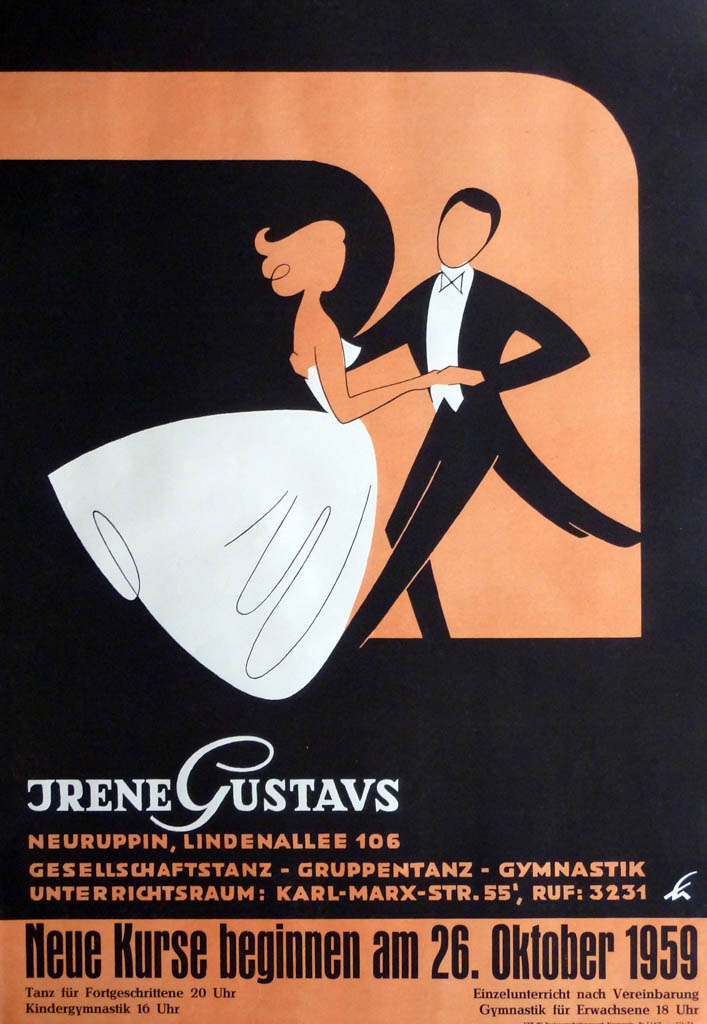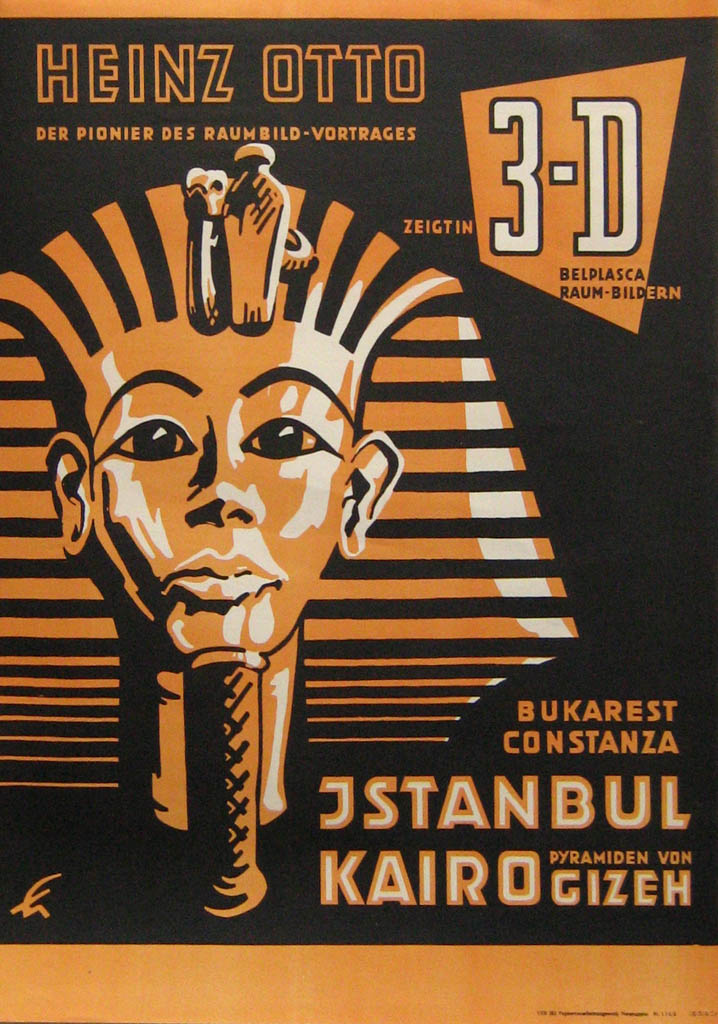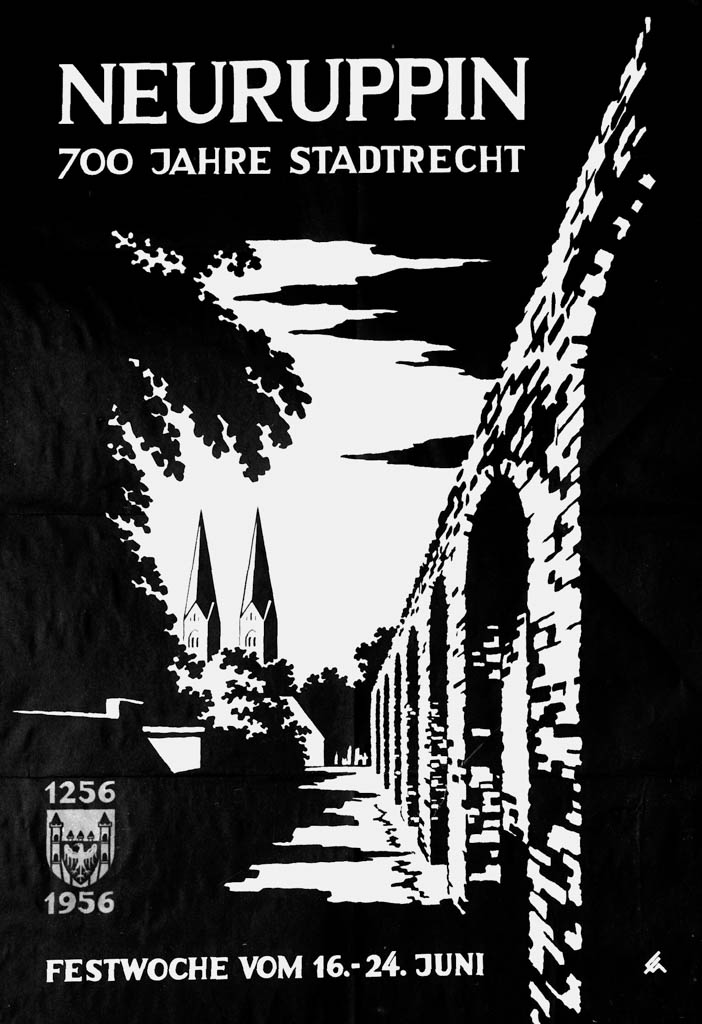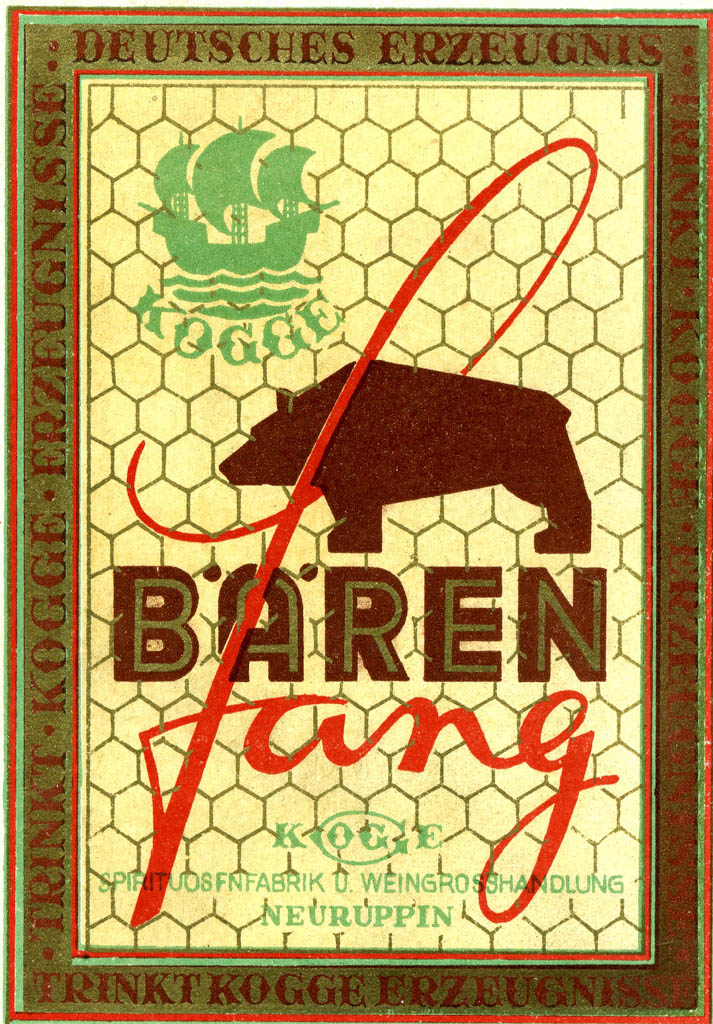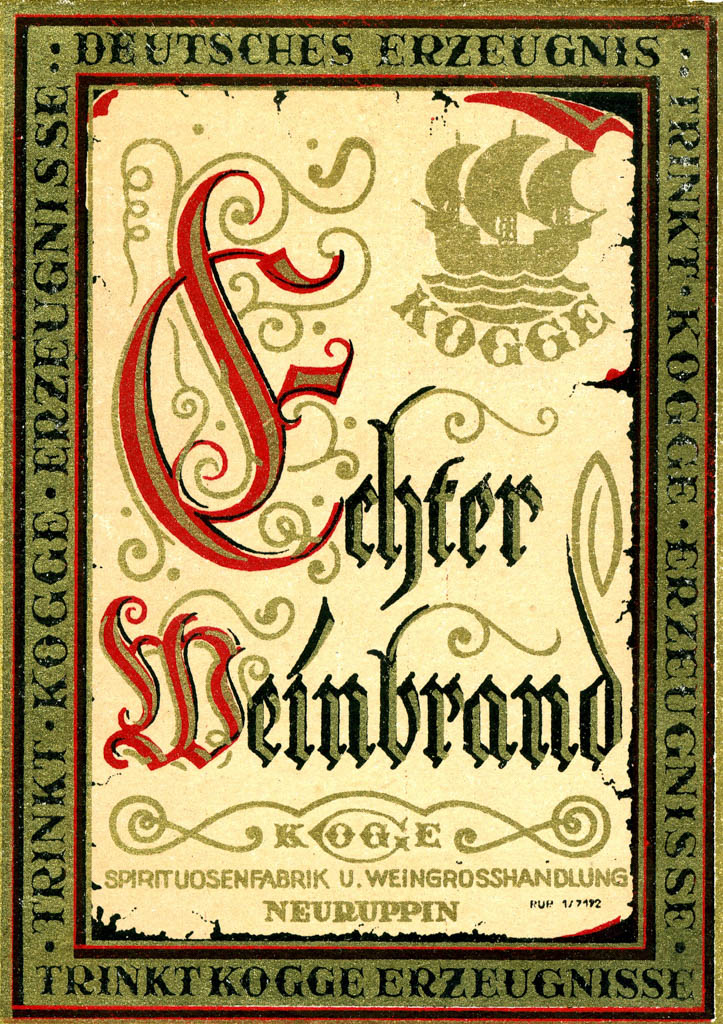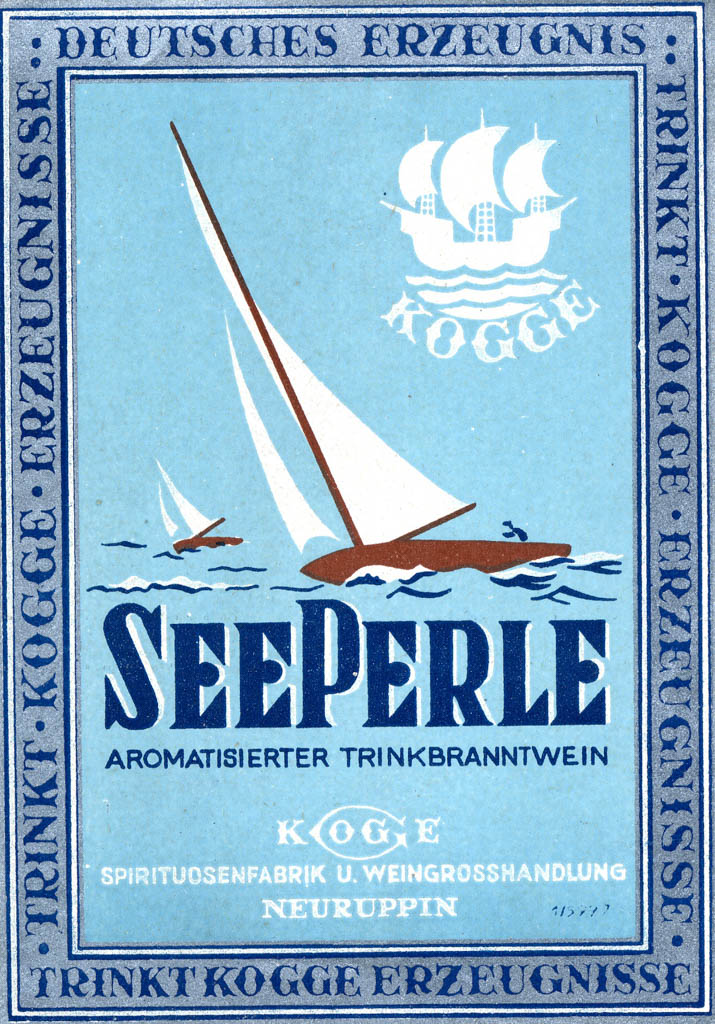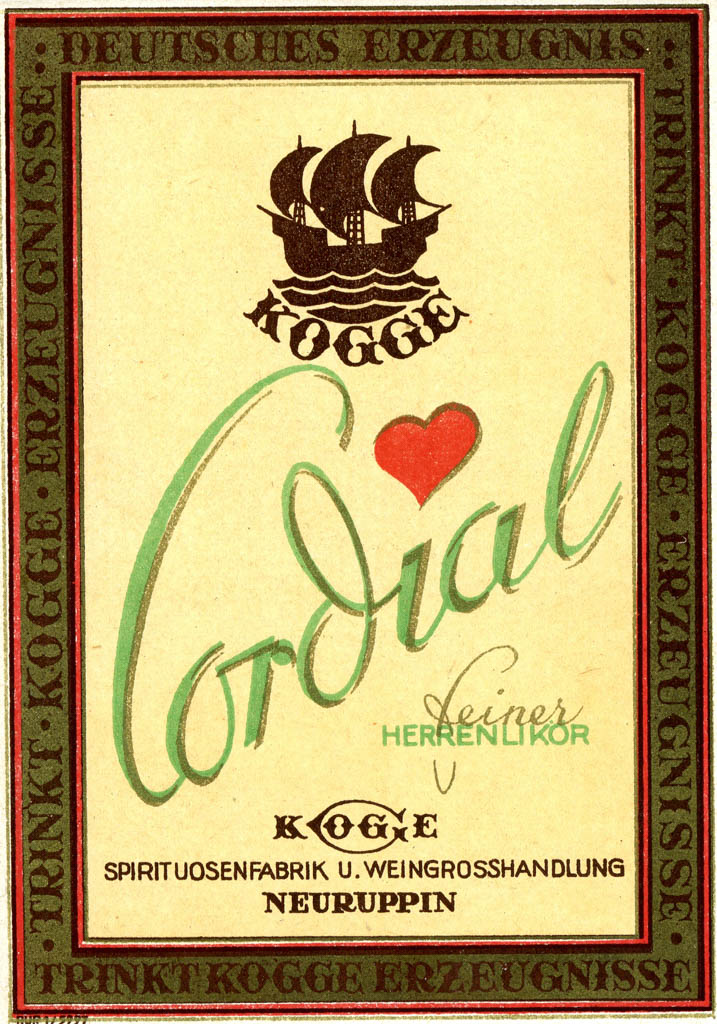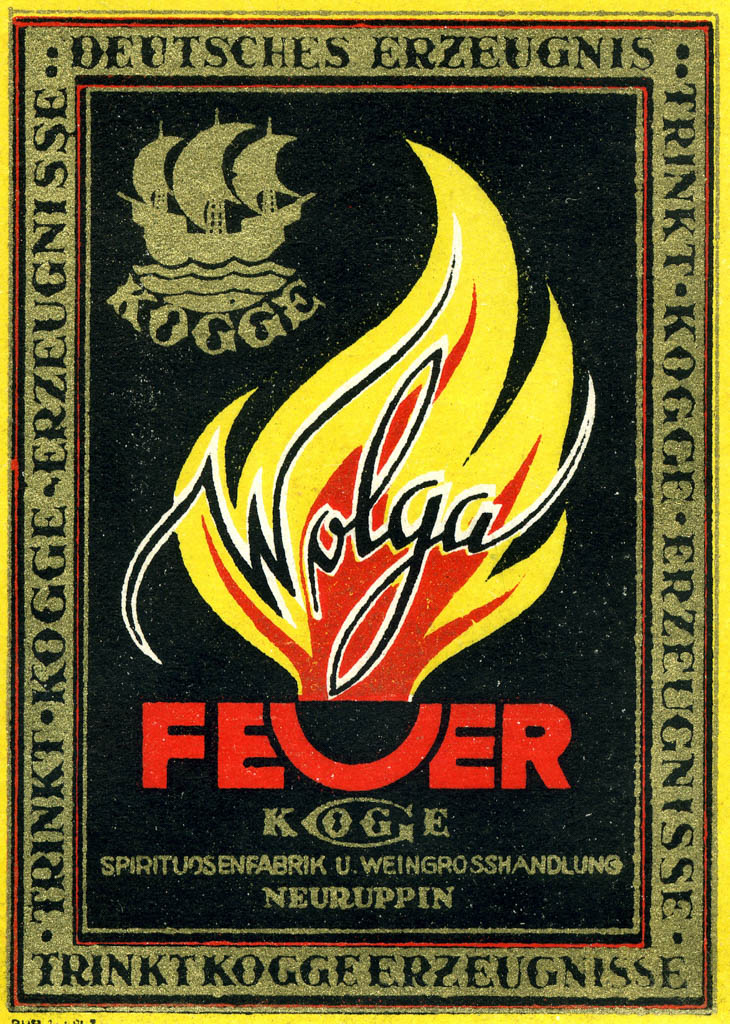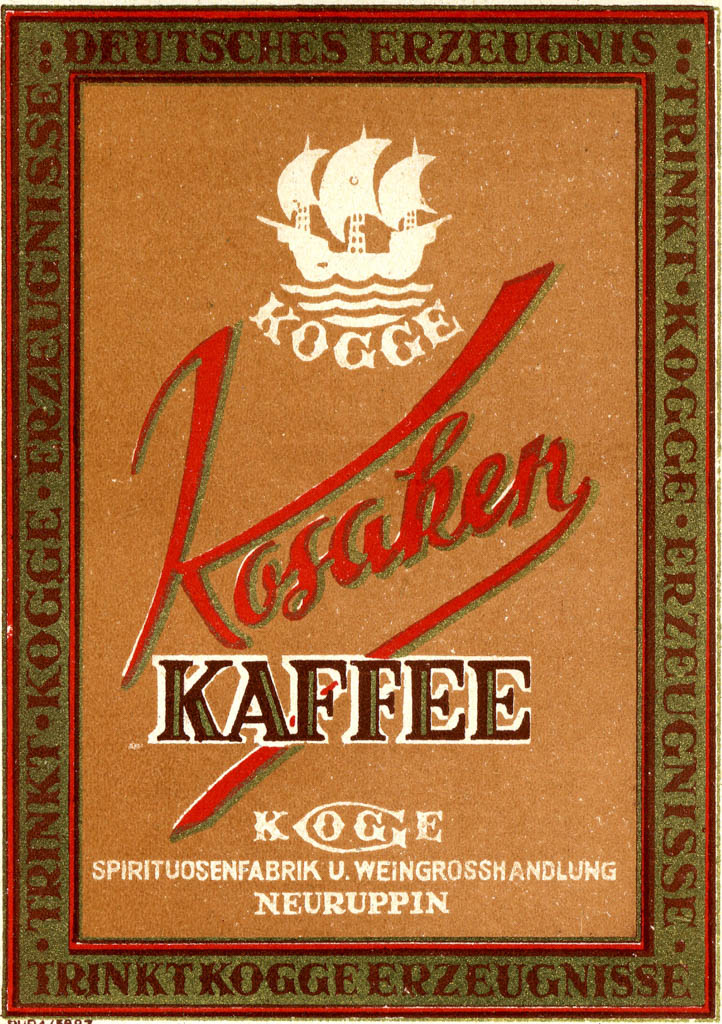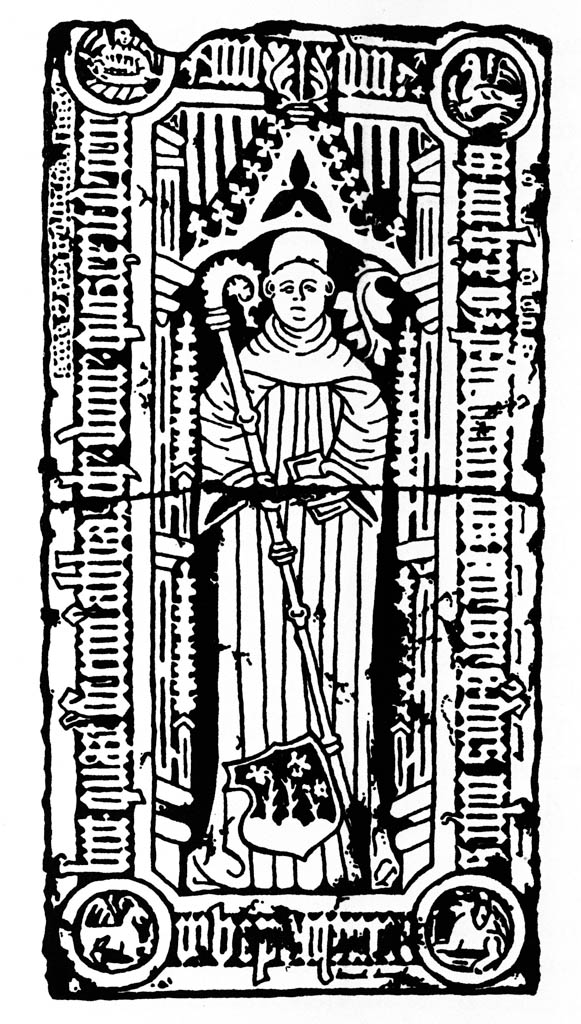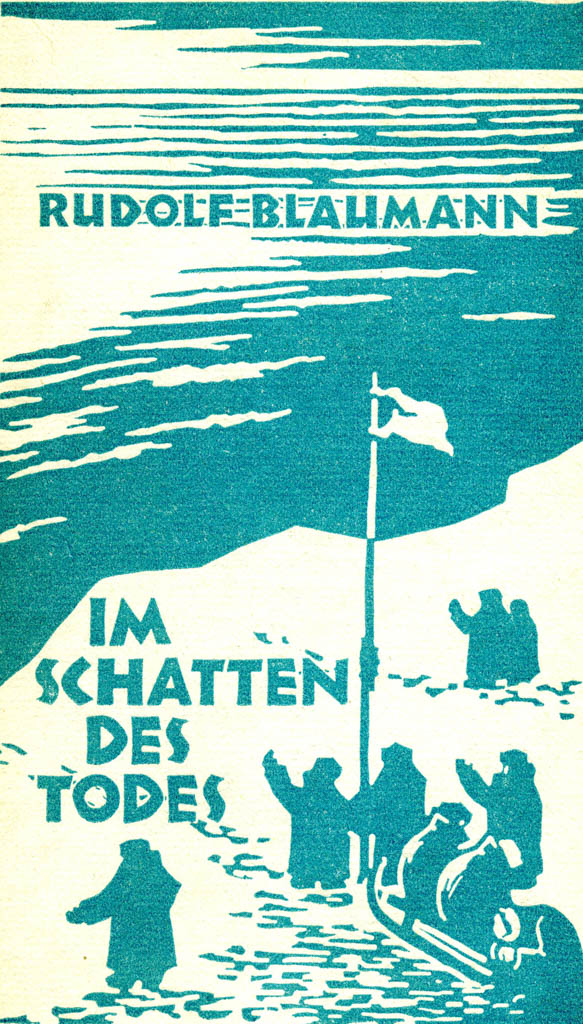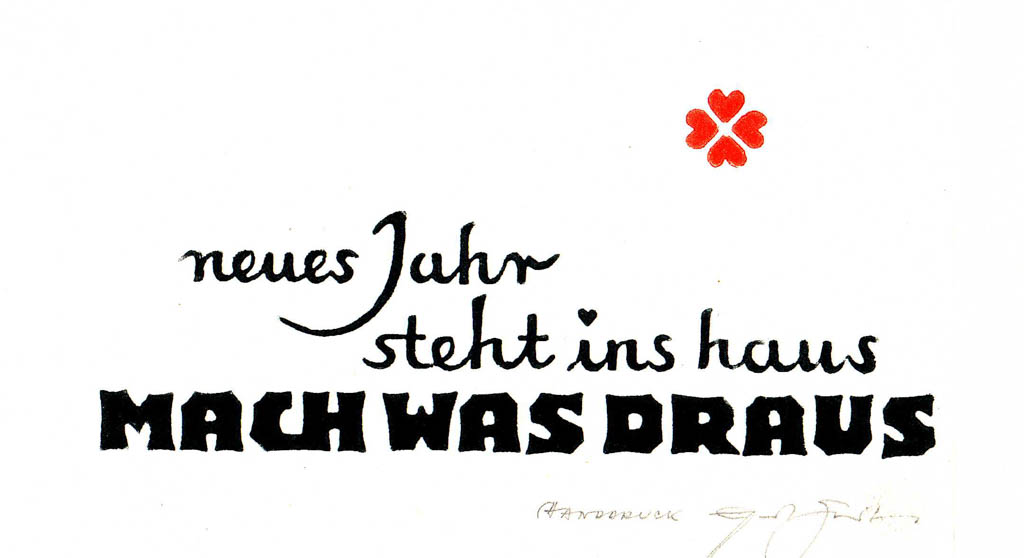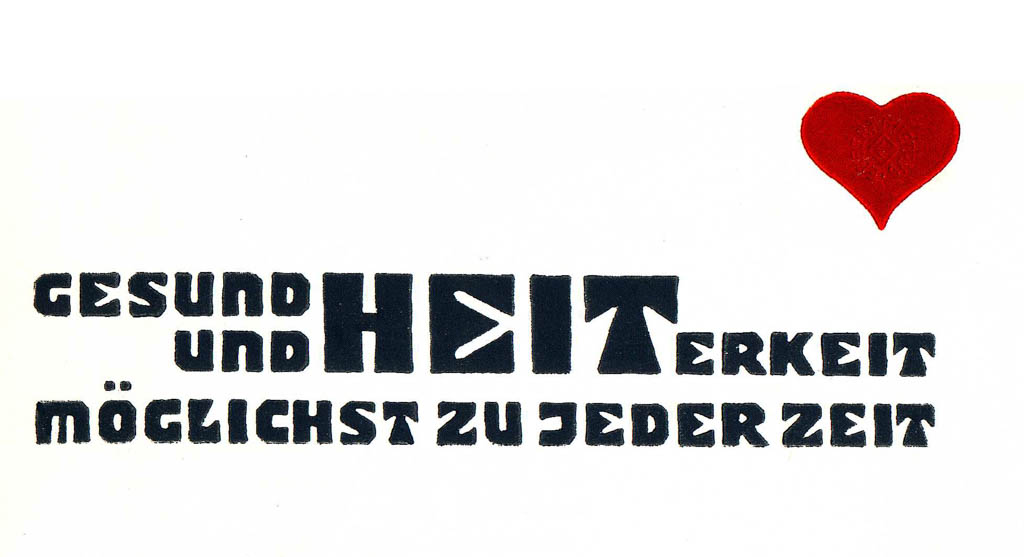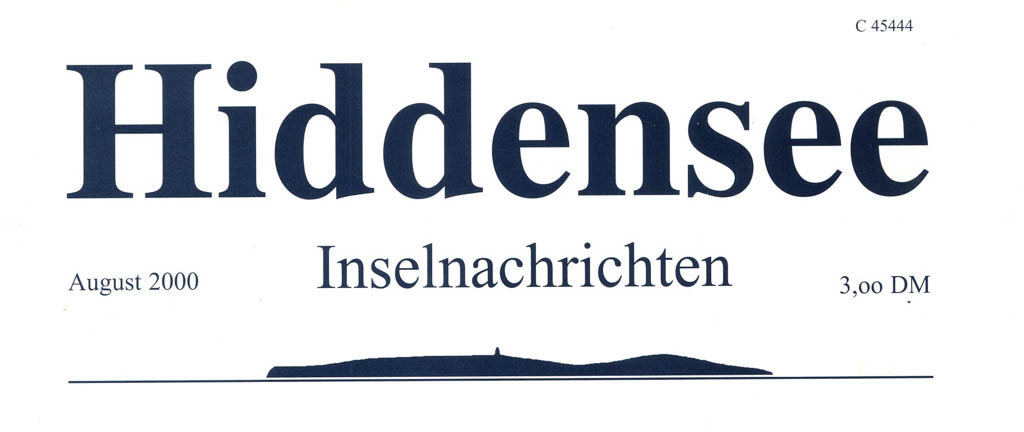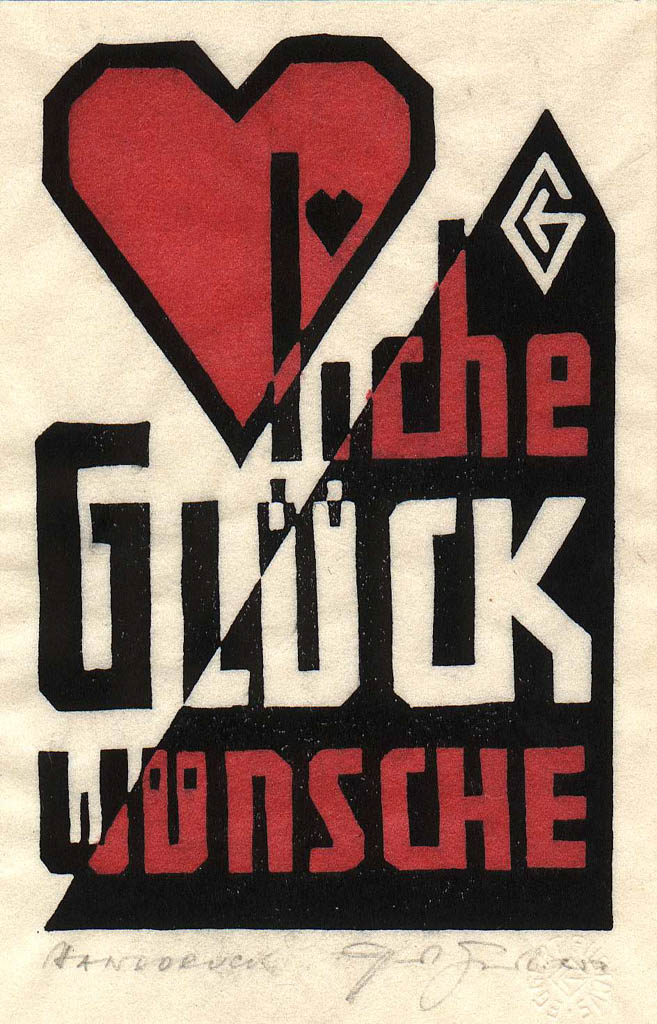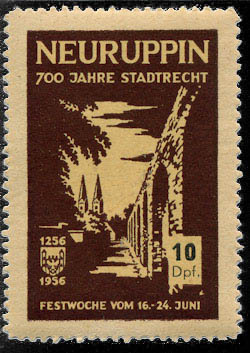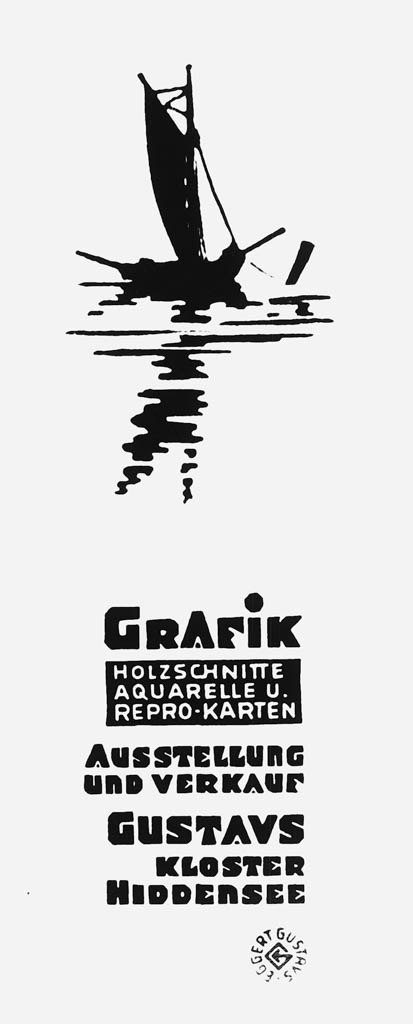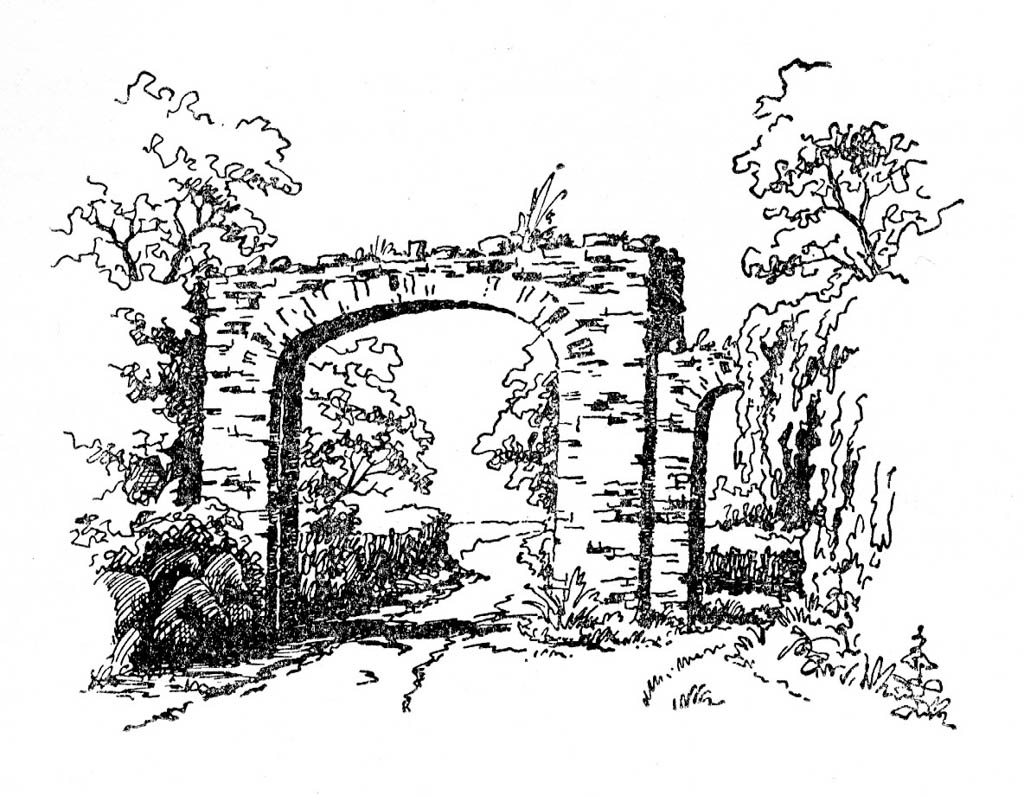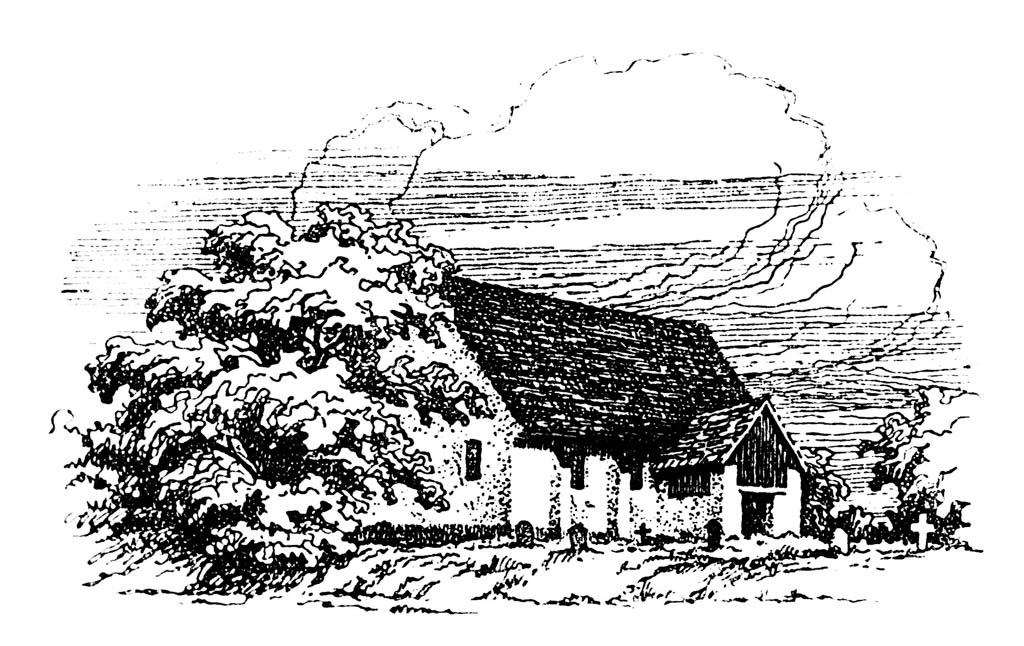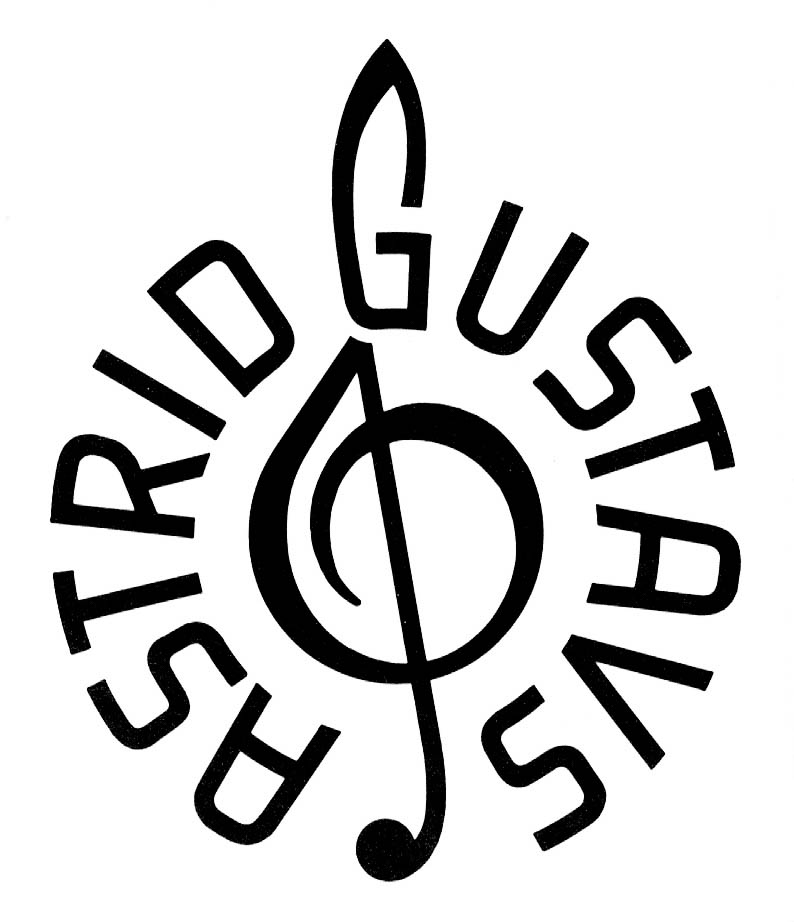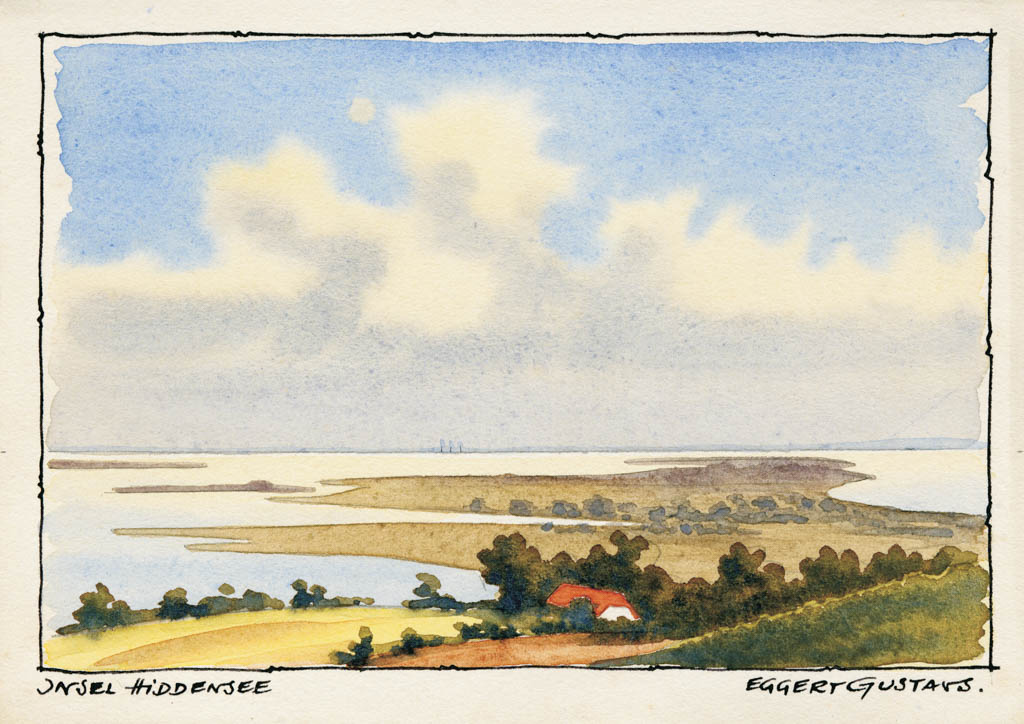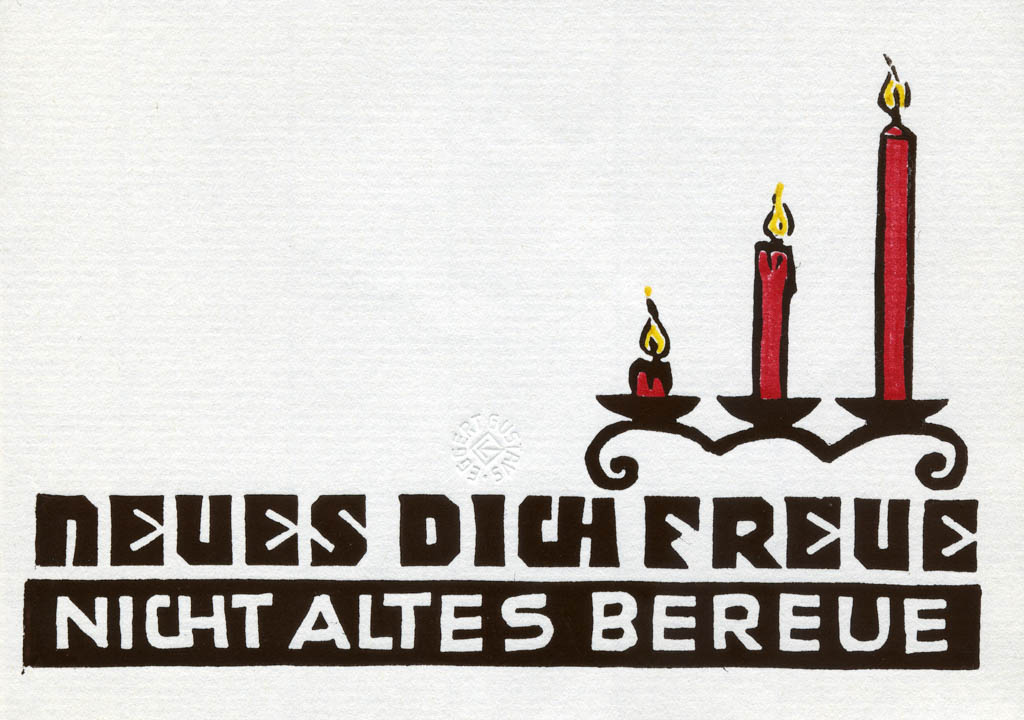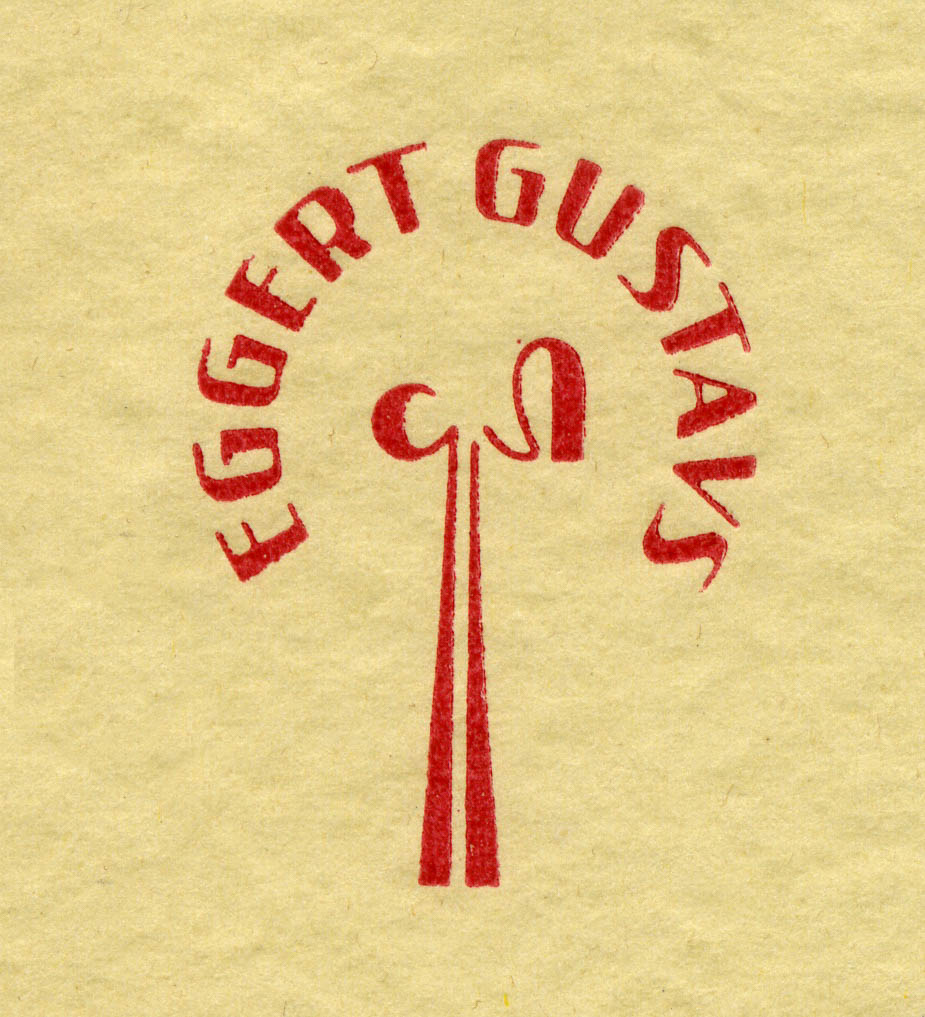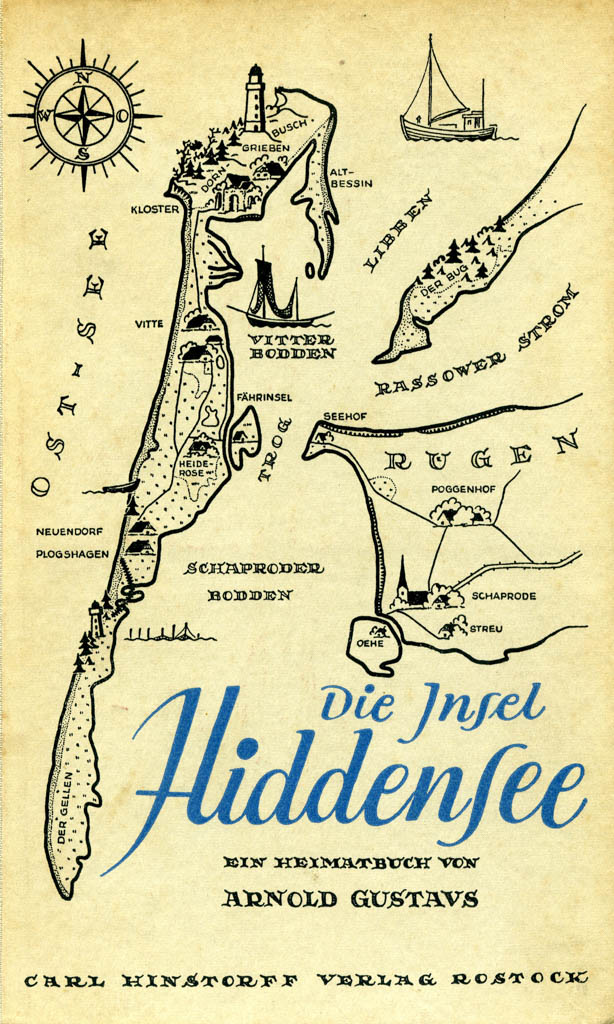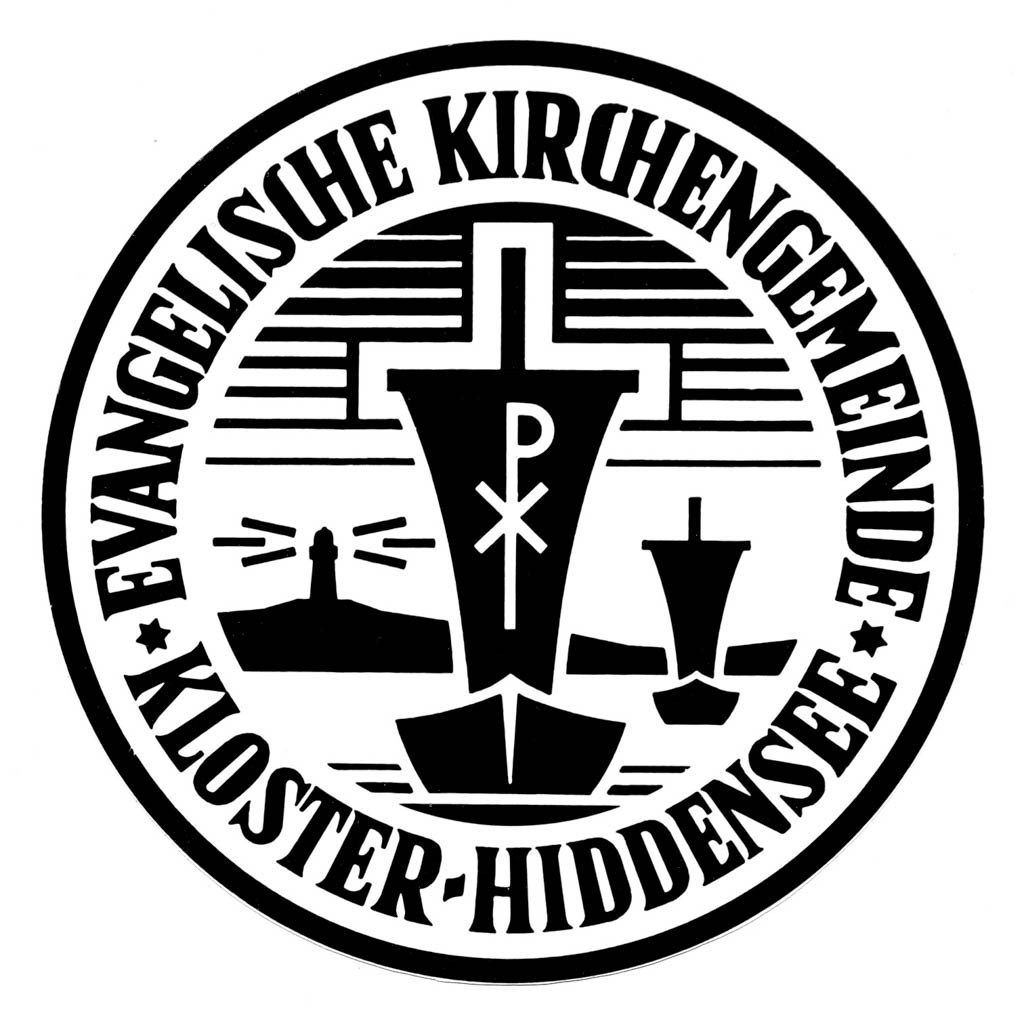Graphic art
Besides painting and sculpture, the term Graphic art refers to the third major area of the visual arts. In the broadest sense, it is a collective term for all artistic or technical drawings, as well as their manual print reproductions.
In the narrowest sense, however, the term graphic art only refers to graphic prints, which also belong to the visual arts. Commercial graphics are applied graphics that go beyond the artistic purpose (or occasionally make no artistic claim at all) and are primarily or solely used for advertising. Eggert Gustavs designed posters, logos, books, and book illustrations.
Woodcuts
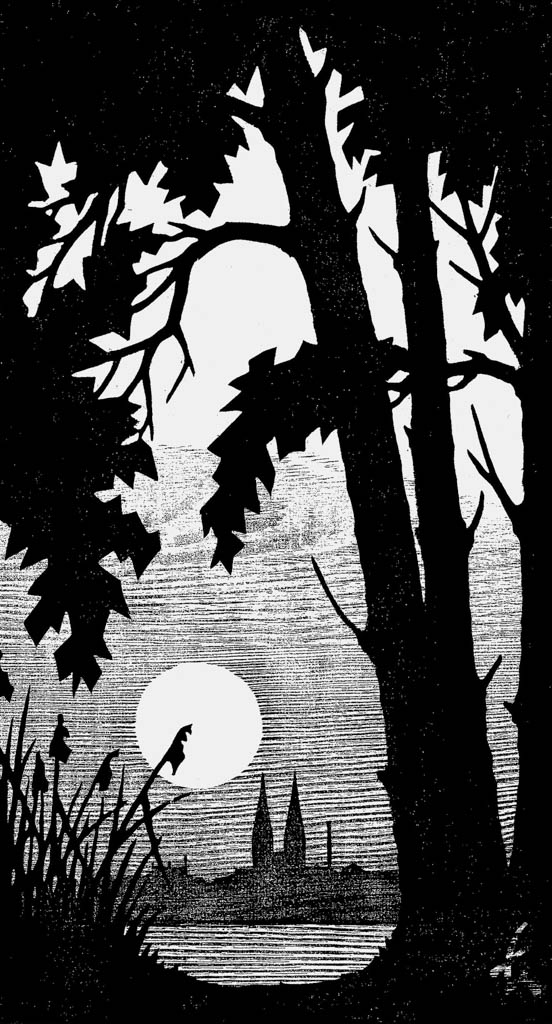
Sunset over Neuruppin
The four printing plates for the woodcut "Sunset over Neuruppin," which were reworked by the artist after the printing.
Tools with which Eggert Gustavs worked (some of which he made himself)
Woodcuts, the oldest technique of graphics reproductions, is a relief printing method in which the raised areas and lines of a printing plate transfer the ink. For his woodcuts, Eggert Gustavs mainly used pine, poplar, and veneer-core or lumber-core plywood with the wood grain parallel to the printing surface. For wood engravings, however, he used pear wood cut across the grain, which has a very fine, narrow grain, thereby providing the graver with the same, easily controllable resistance in every direction – unlike the sometimes difficult to predict side grain.
First he put the preliminary drawing on the wood and then cut away the superfluous parts with special woodcut tools. Such cutting tools usually have a mushroom-shaped handle that allows more pressure to be exerted on the tool. At the end of this process, the lines and areas of the drawing remained as ridges, edges, or larger areas. He then applied the ink to the finished printing plate. For this purpose, the ink was evenly distributed with a hand roller on a glass plate and only then was it applied to the so-called printing block with this roller.
The actual printing was carried out by placing an absorbent and sometimes slightly damp sheet of paper on the inked printing block and pressing it on. Different shades of black or gray could be achieved by pressing or rubbing with different strengths.
Eggert Gustavs also often cut several plates for printing a single image – both for multicolor as well as black-and-white prints. Furthermore, the artist occasionally used the natural grain of the wood as a graphic element, e.g. for depicting clouds. He achieved this effect by brushing the wooden board with a wire brush to let its grain stand out in relief. With this technique, he sometimes softened the sharp contrast between black and white and was able to imbue the image with a kind of floating lightness through fine graduations of hues across different parts.
Die Herstellung des Holzschnittes „UNITER“ erfolgte im sogenannten Weißlinienschnitt, bei dem der Künstler die Linien der Zeichnung wie eine Gravur in den Holzblock eingeschnitten hat. Diese Rillen nehmen beim Einfärben keine Druckfarbe an, bleiben also beim Abdruck weiß, während sich die Farbe des erhöht gebliebenen Umfeldes auf das Blatt überträgt. Somit wird beim Abzug nur und gerade die Fläche abgedruckt, die eigentlich den Hintergrund ausmacht. Im Fall der Grafoplastik „UNITER“ ist jedoch ausnahmsweise der Druckstock, der als Plastik frei stehend seine beeindruckende Wirkung erzielt, das eigentliche Kunstwerk.
Zeesenboot, printing plate
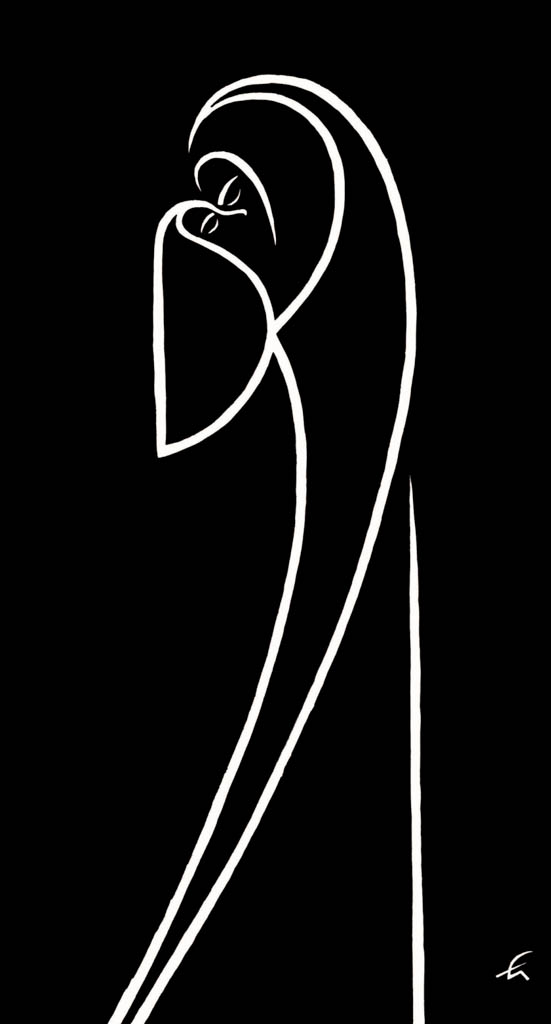
“Uniter”, graphic sculpture
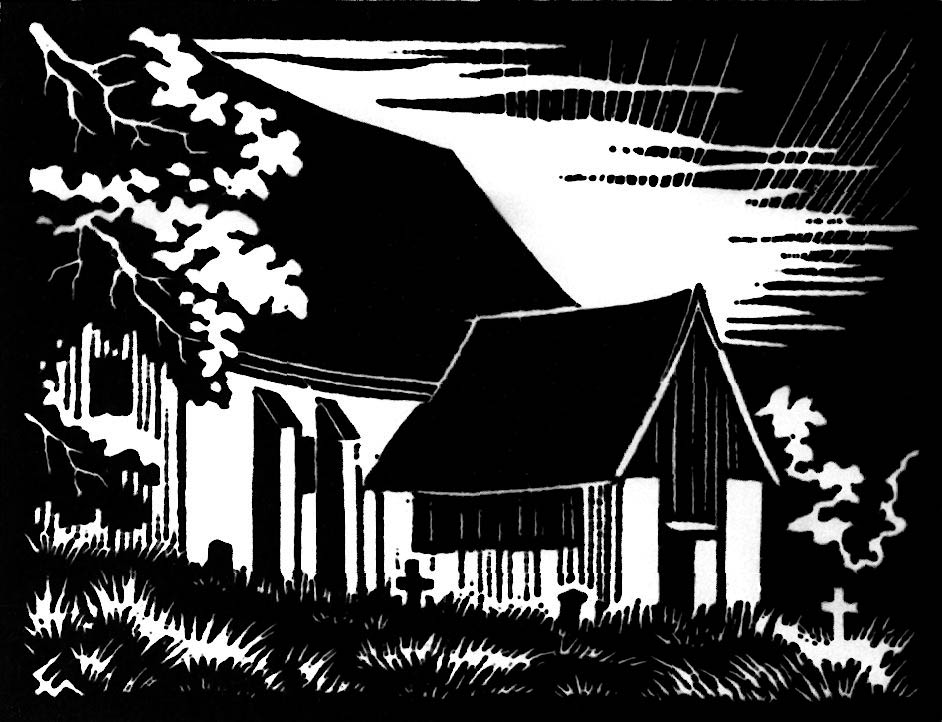
Island church of Kloster, wood engraving
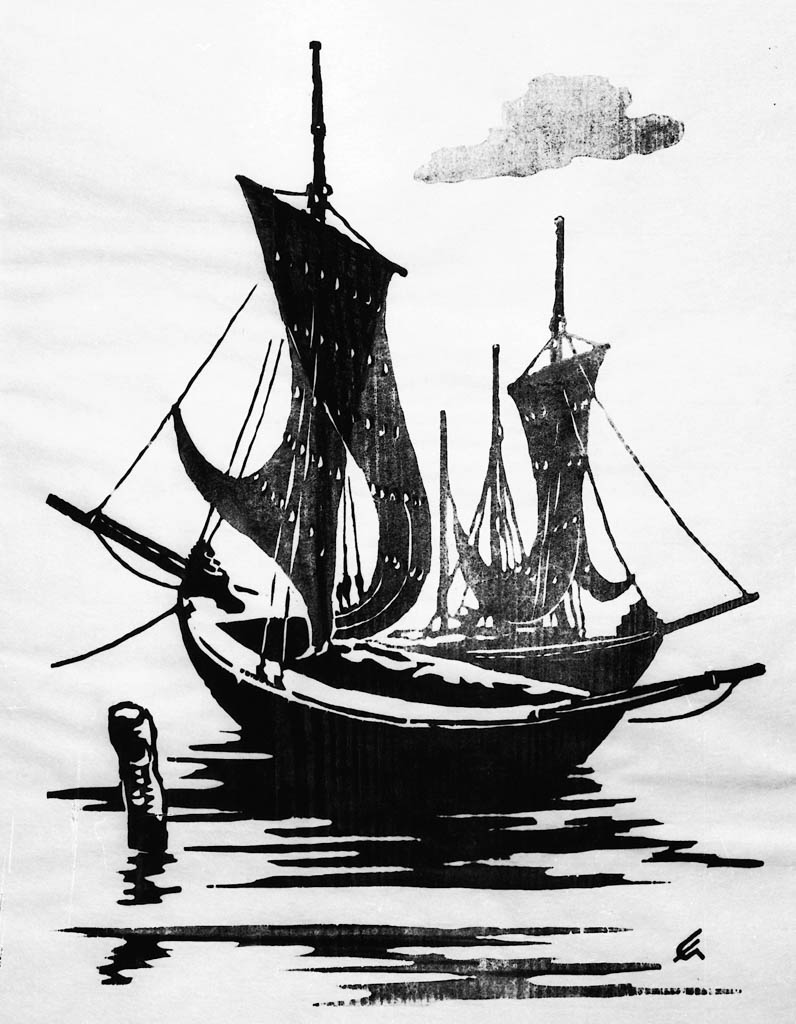
Zeesenboot, print
Linocut
Linocut, the more recent variant of woodcuts, is a graphics technique that also uses a relief printing process. A negative pattern is cut with a special tool. In this application, the artist also has to cut a reversed image; in the case of texts, he must write in mirror image. Since linoleum is much softer than wood, it is easier to work with knives and cutting springs. And like wood engravings, it can be cut in the same way and with the same pressure in every direction.
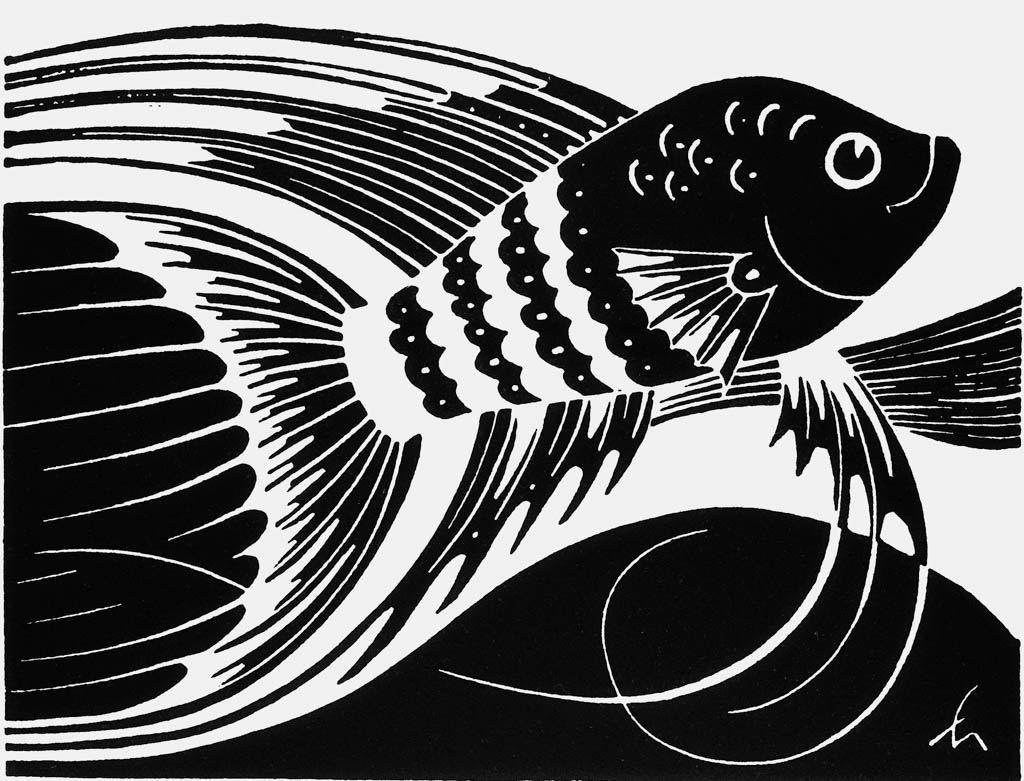
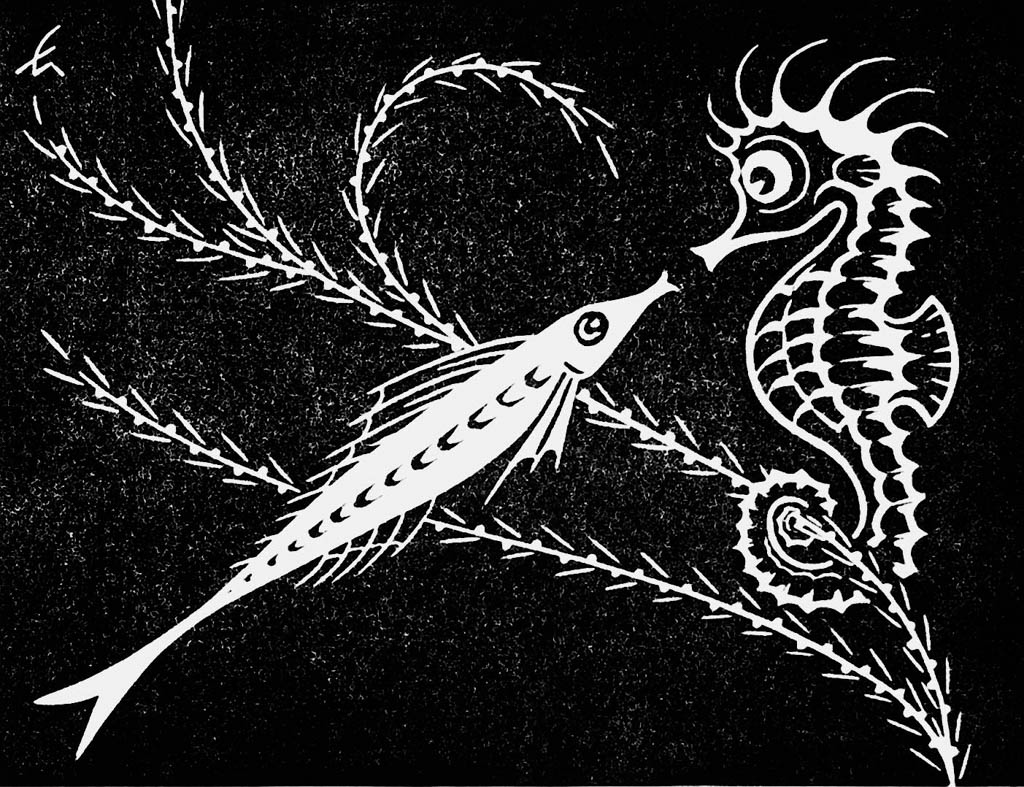
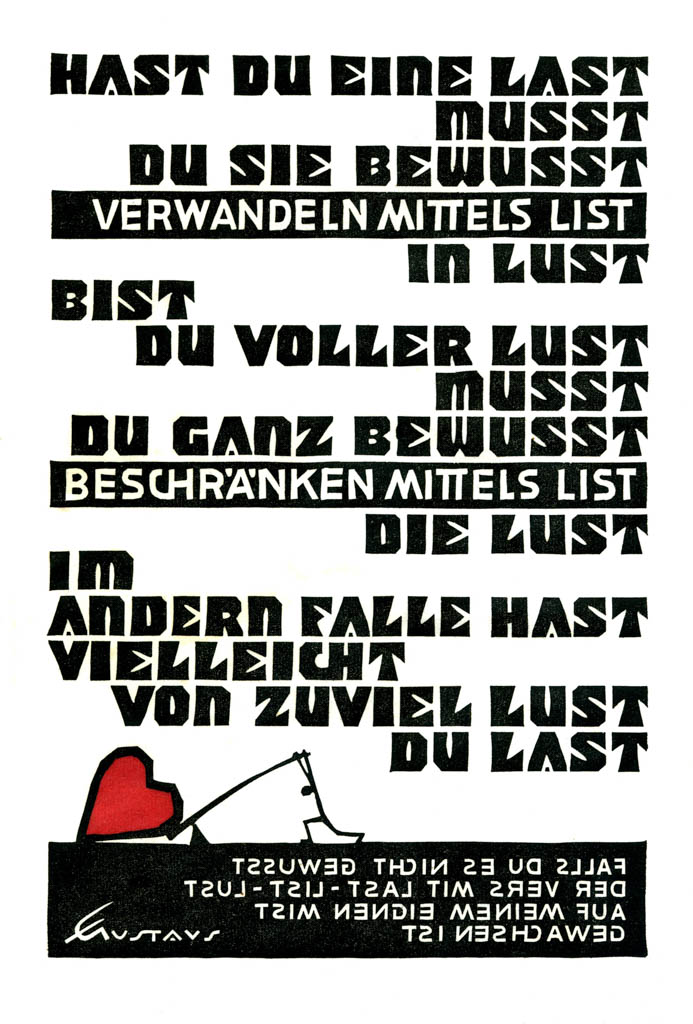
Burden – Craftiness – Desire, printing
Monotype
A monotype combines painting, drawing and graphics. Instead of paper or canvas, printing ink is used to draw or paint on glass, acrylic, or metal plates and the result is printed on paper, while the ink is still damp. This means that only one single, unique (reversed) print is possible. Therefore, monotype is not like conventional printmaking whose main characteristic is the production of any number of almost identical images. There is a connection to printmaking though because the surface of the image, the printing paper, is not directly worked on, but only indirectly.
Eggert Gustavs used glass plates to create his monotypes. He also used this technique, which is probably not often used, to edit motifs. To do so, he put a sketch under the pane of glass, made any number of changes, and by printing it immediately, he was able to examine and check the result and, if necessary, make further corrections.
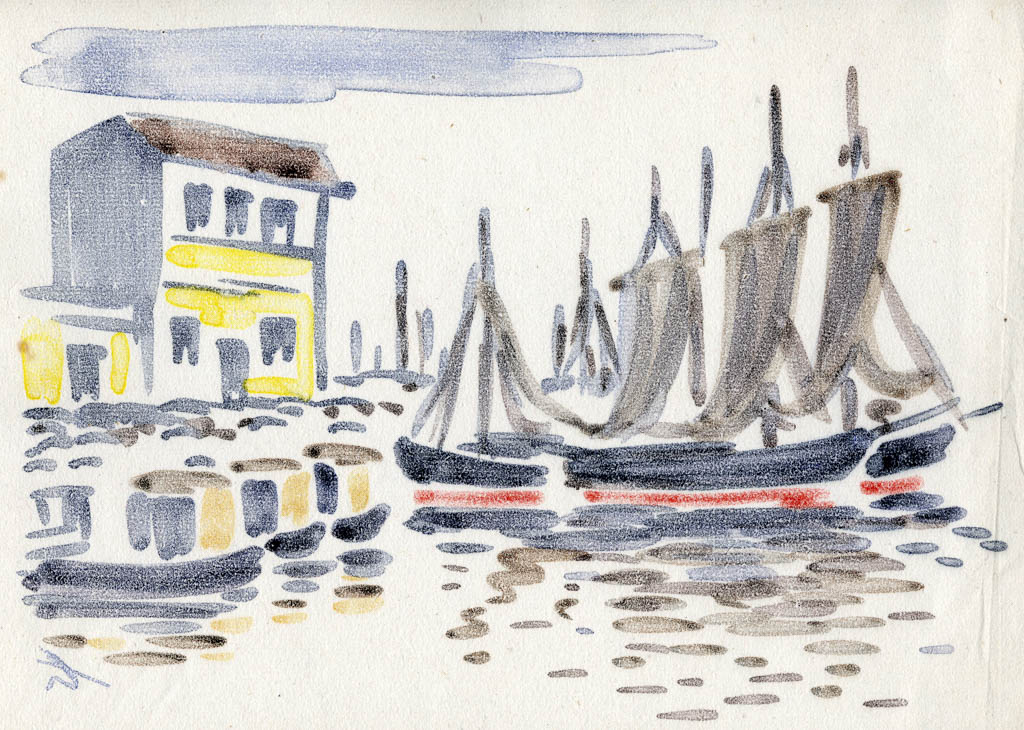

Zinc etching
A zinc etching, also referred to as cliché, is also a relief printing method and an etching technique.
The drawing is applied to a zinc plate with an asphalt varnish. During the subsequent etching in the acid bath, all metal that is not covered with asphalt paint is eaten away by the acid. The ink is applied to the printing plate by rolling over it, so that only the raised parts of the printing block carry ink. Eggert Gustavs released a postcard series using this technique.
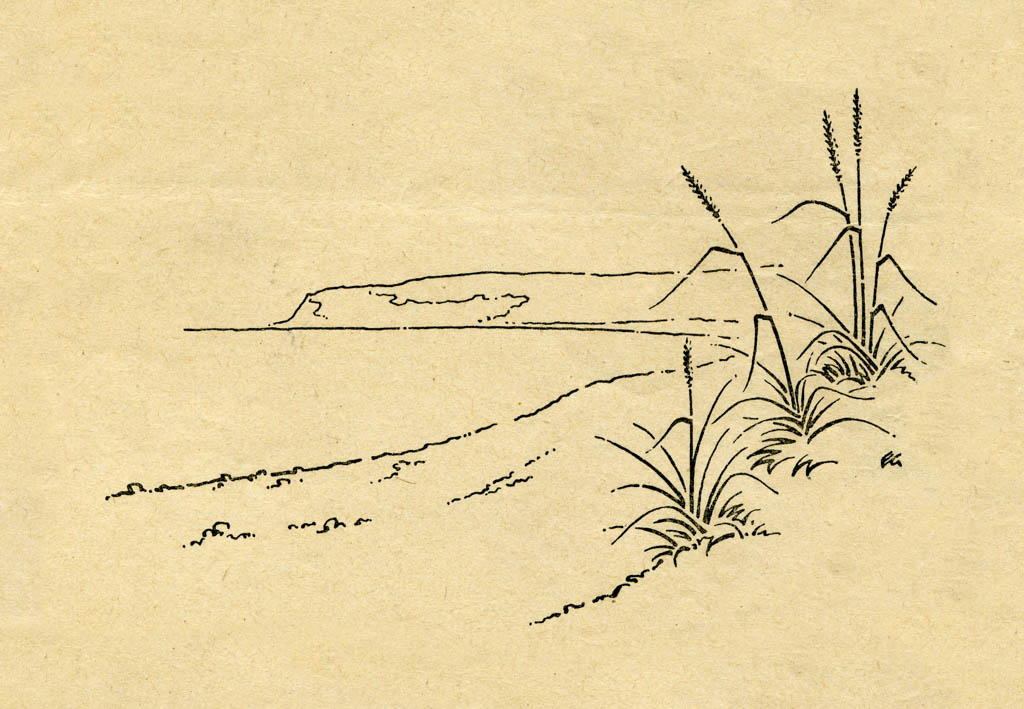
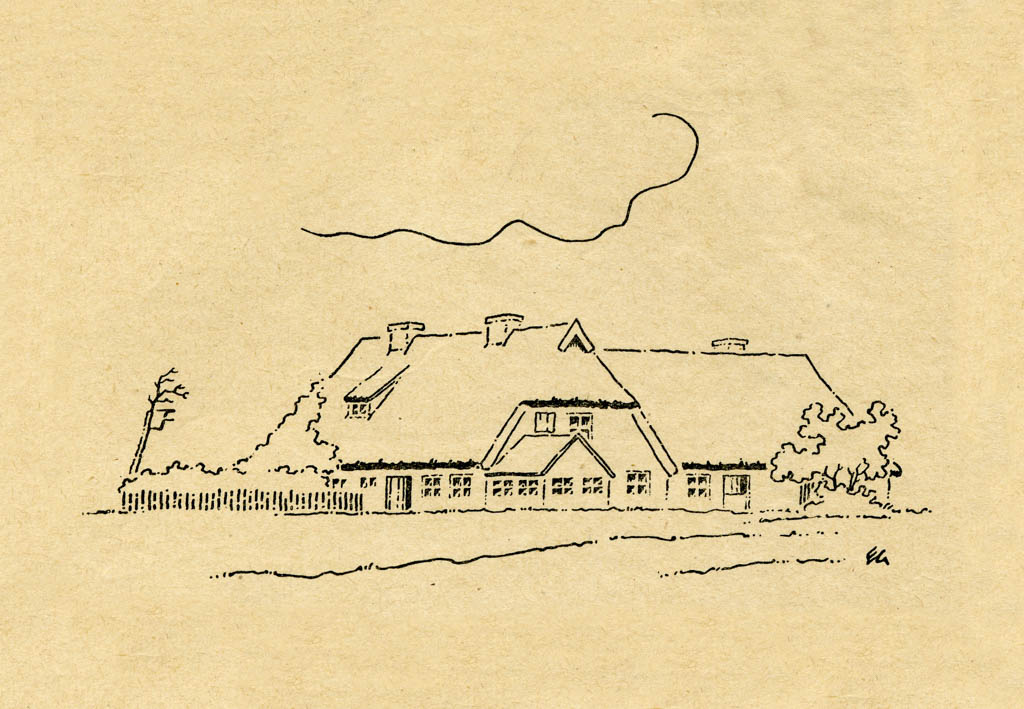
Island of Hiddensee, postcards
Lithography
Lithography (cf. Ancient Greek: λίθος = lithos: “stone“ and γράφειν = graphein: “write“) is a flat printing process or the result of stone printing.
Up to around 1910, lithography was a very frequently used printing technique, also for the famous Neuruppin picture sheets. The drawing to be printed is applied to a specially prepared (ground, grained, and degreased) fine-grained limestone with a fatty substance (e.g. lithographic chalk or ink) and stabilized. The unprotected base of the drawing is first treated with an etching solution and then with a gum arabic solution so that it does not accept the greasy printing ink when it is applied to the printing plate.
For printing, a slightly moistened sheet of paper is usually placed on the stone slab and then run through a suitable press under very high pressure. As with all direct printmaking techniques, this creates a mirror image of the drawing.
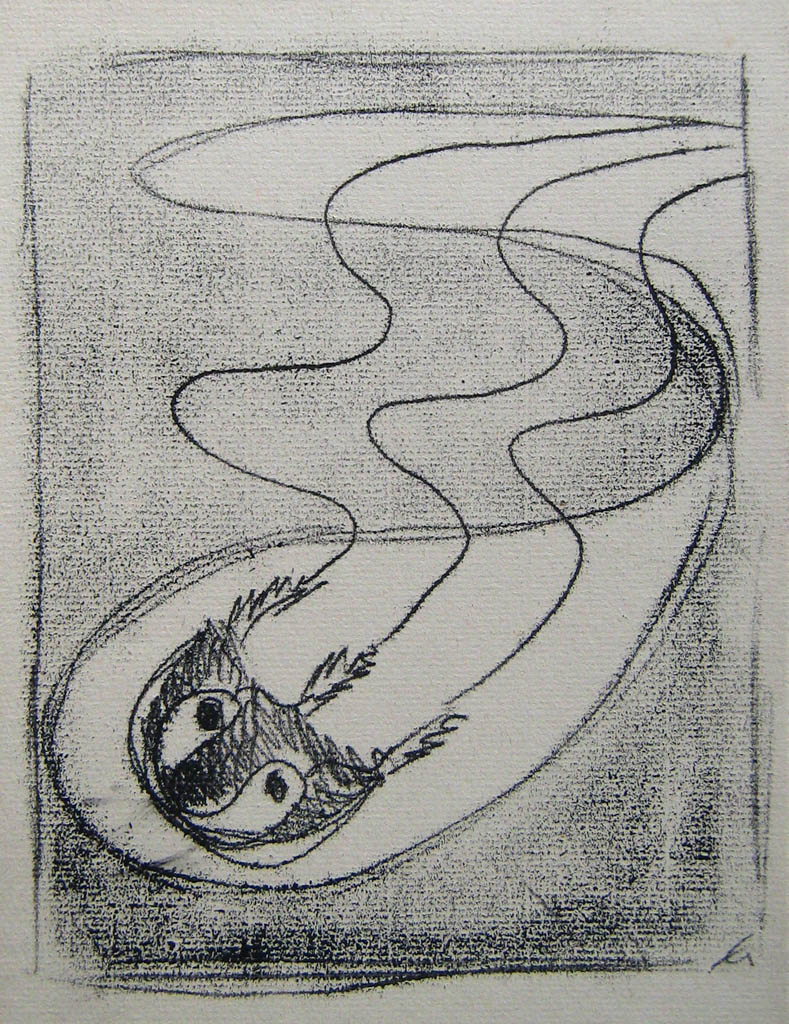
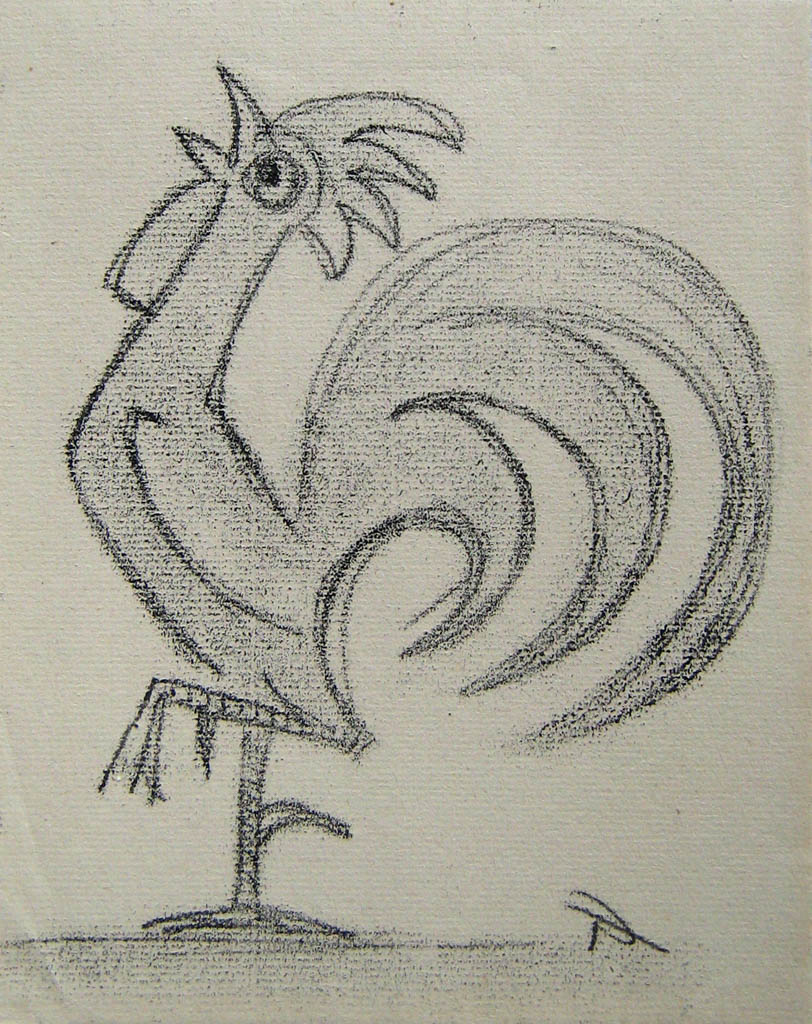
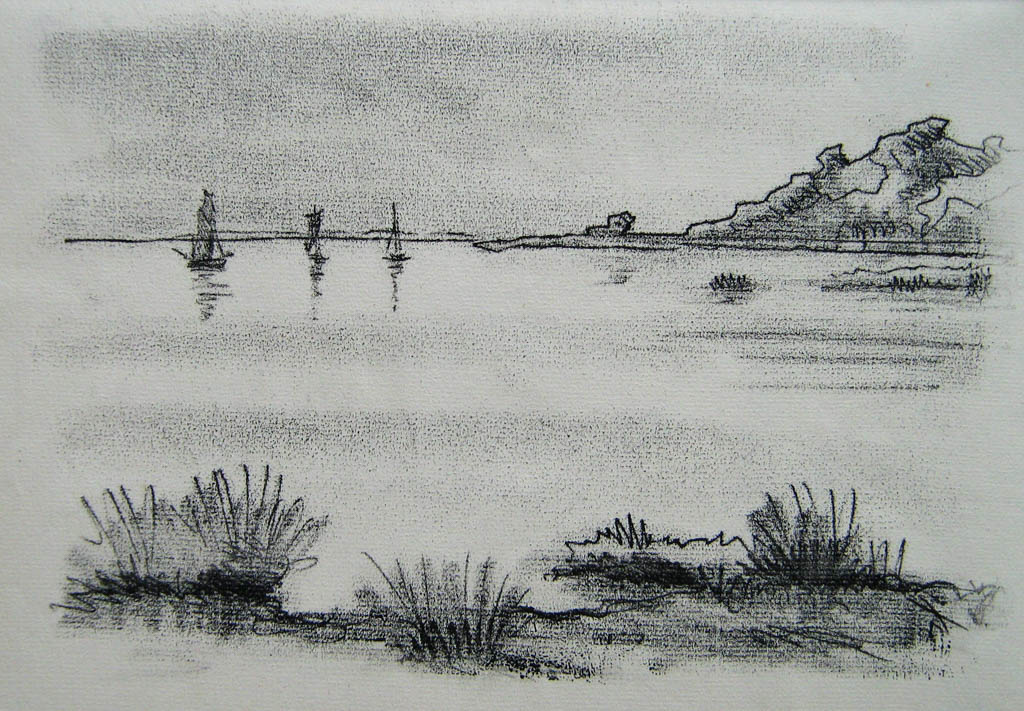
Bay view at Schwedenhagen
Memento – Remember!
The artist’s satirical confrontation with fascism and its impact
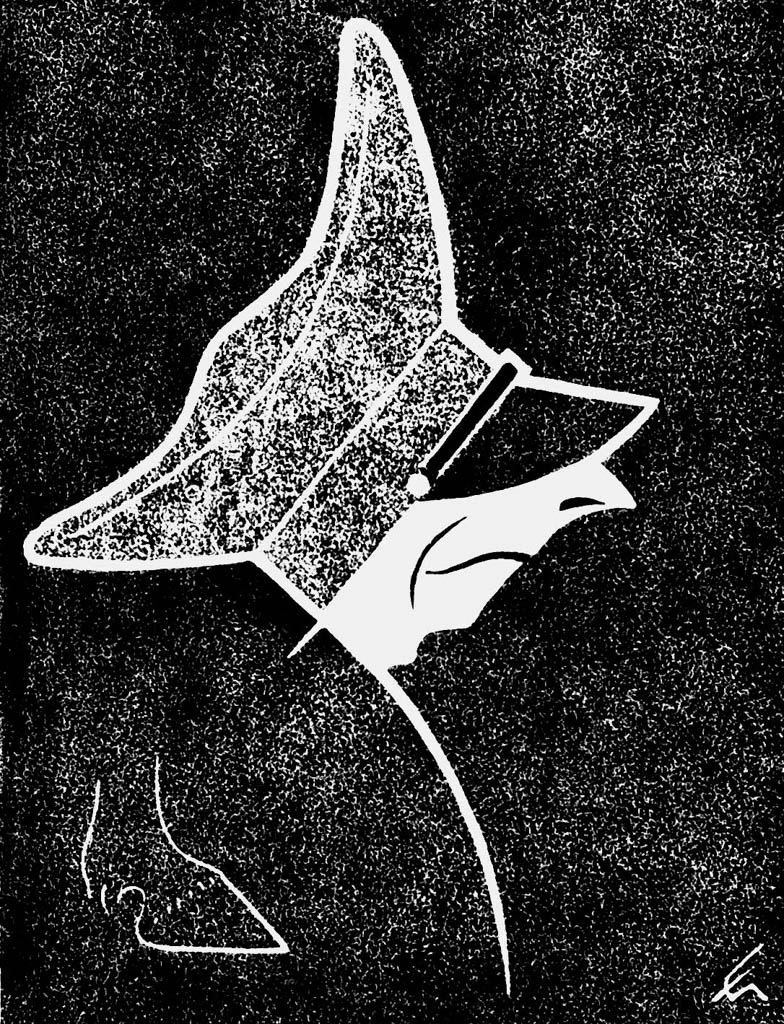
Goebbels
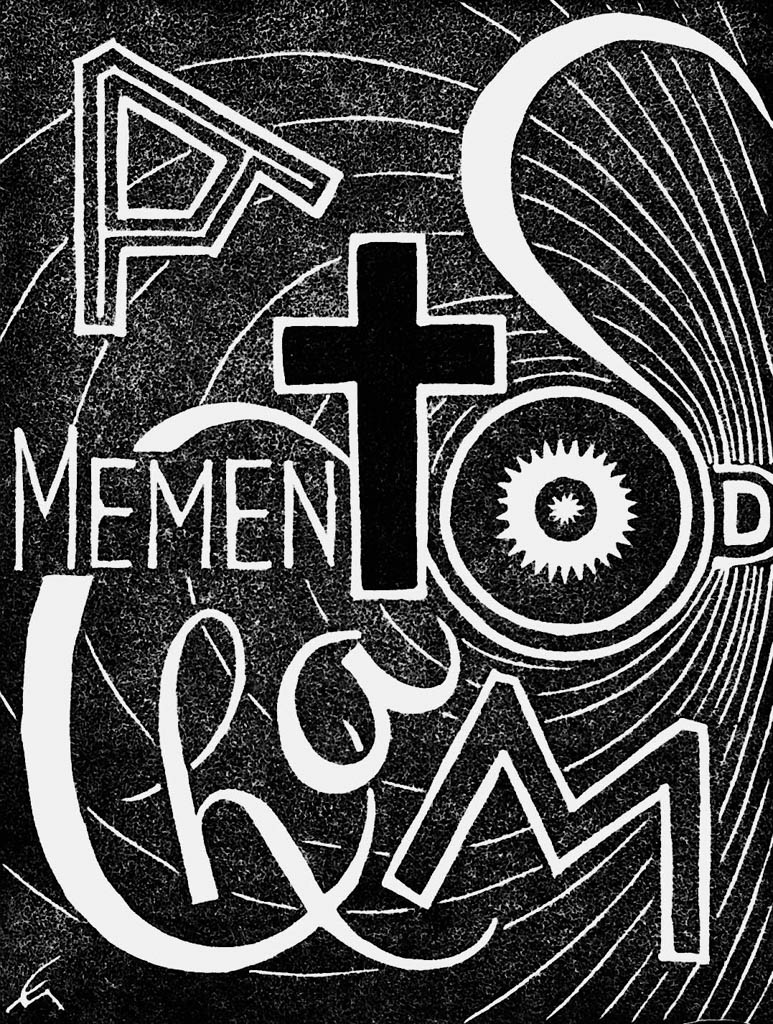
Memento – Atom – Chaos – Death
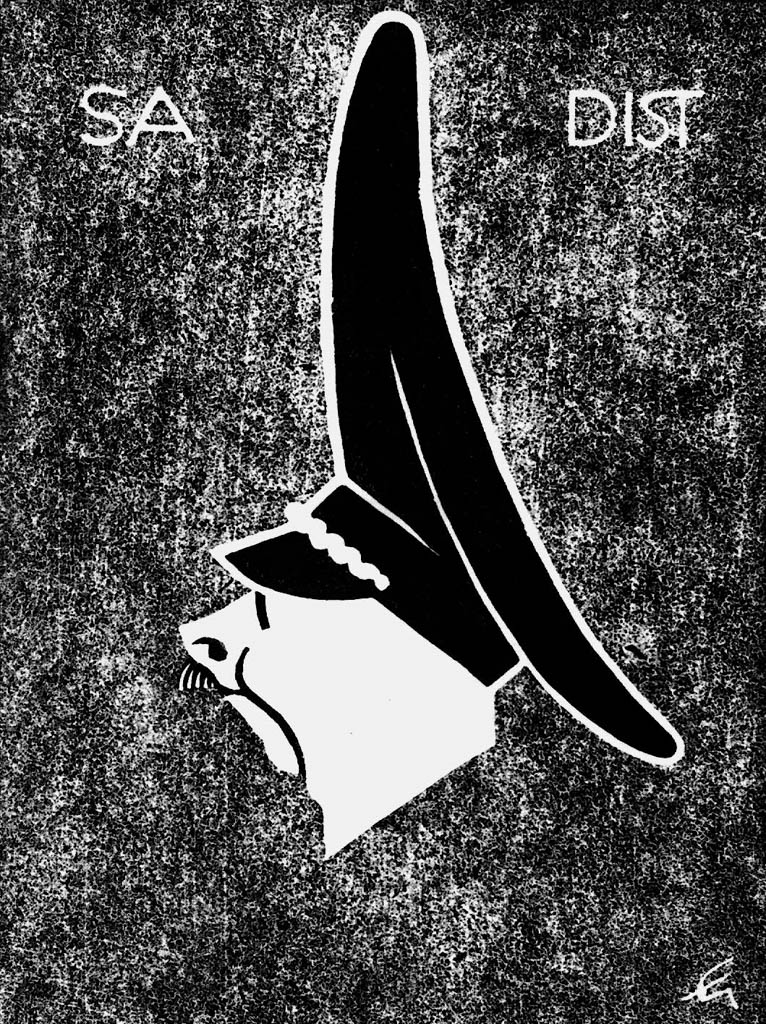
Himmler
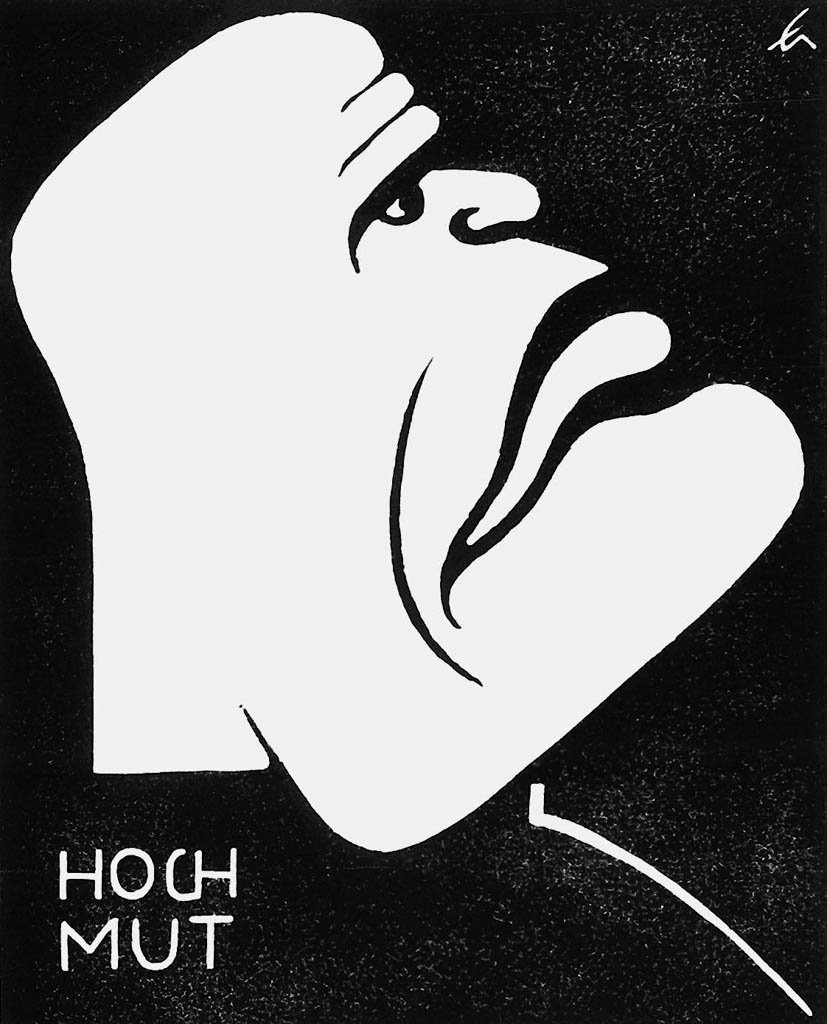
Mussolini
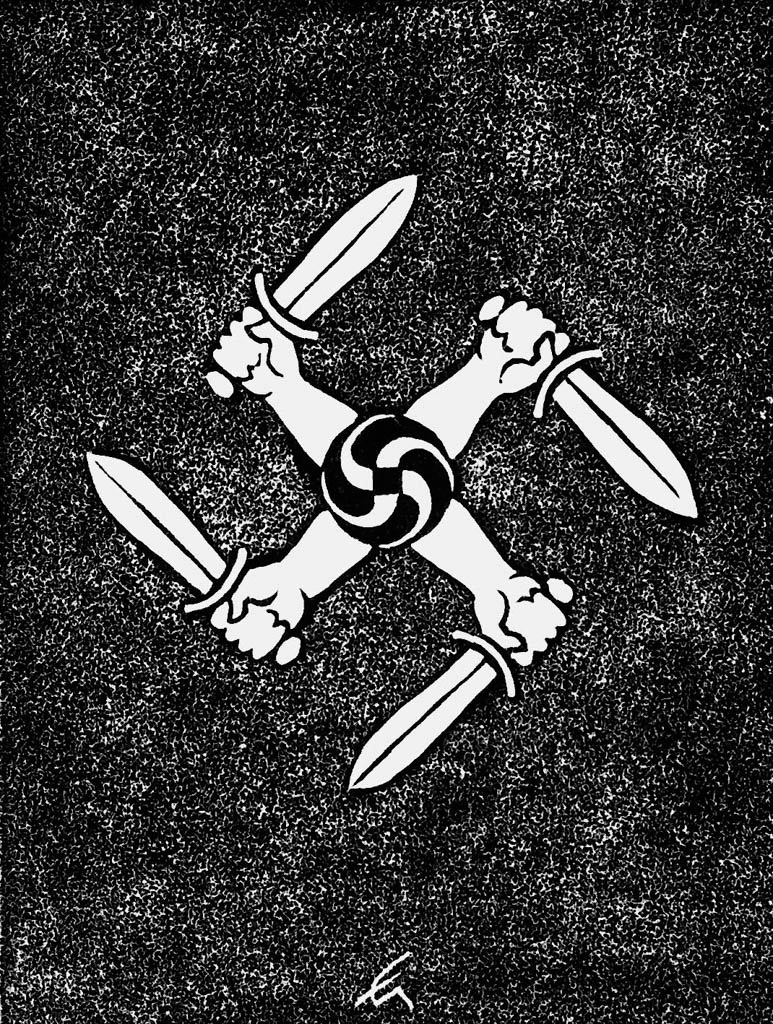
Swastika
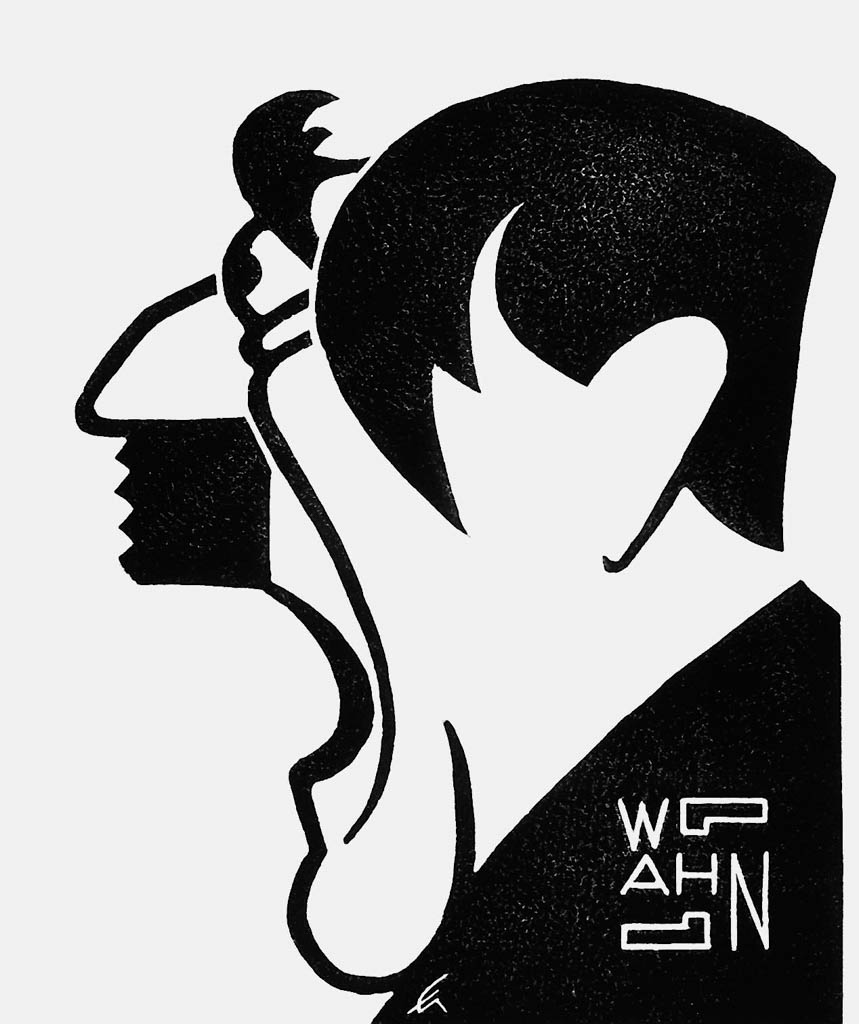
Hitler
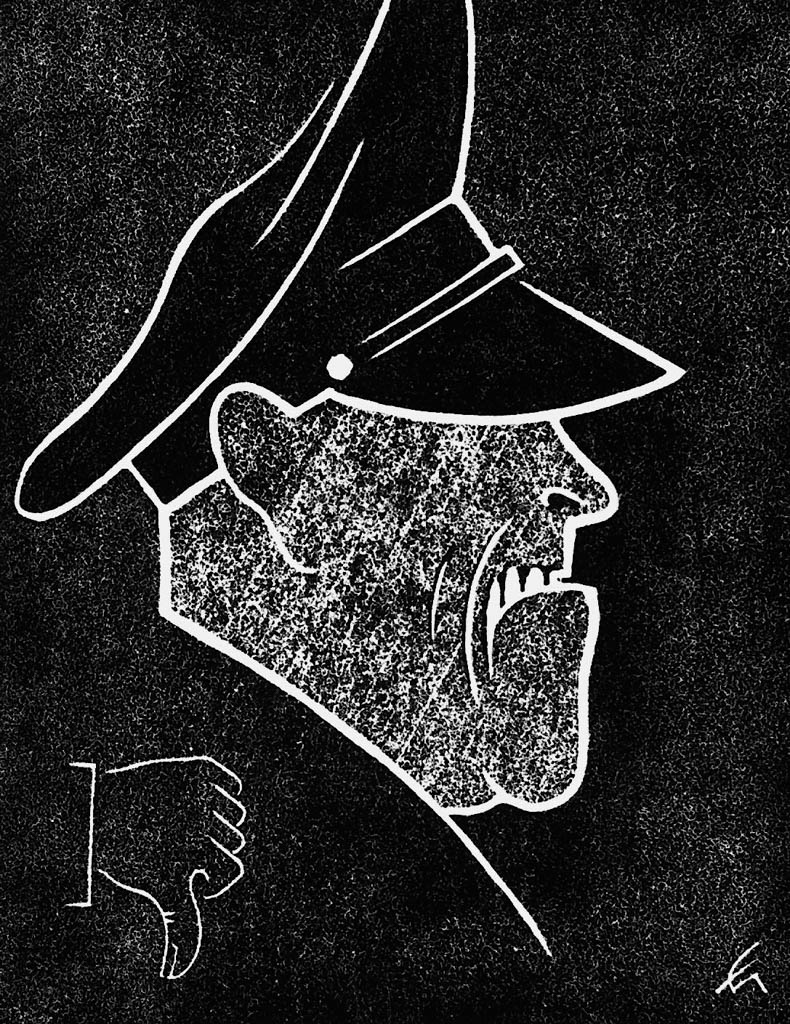
„Kommiss“
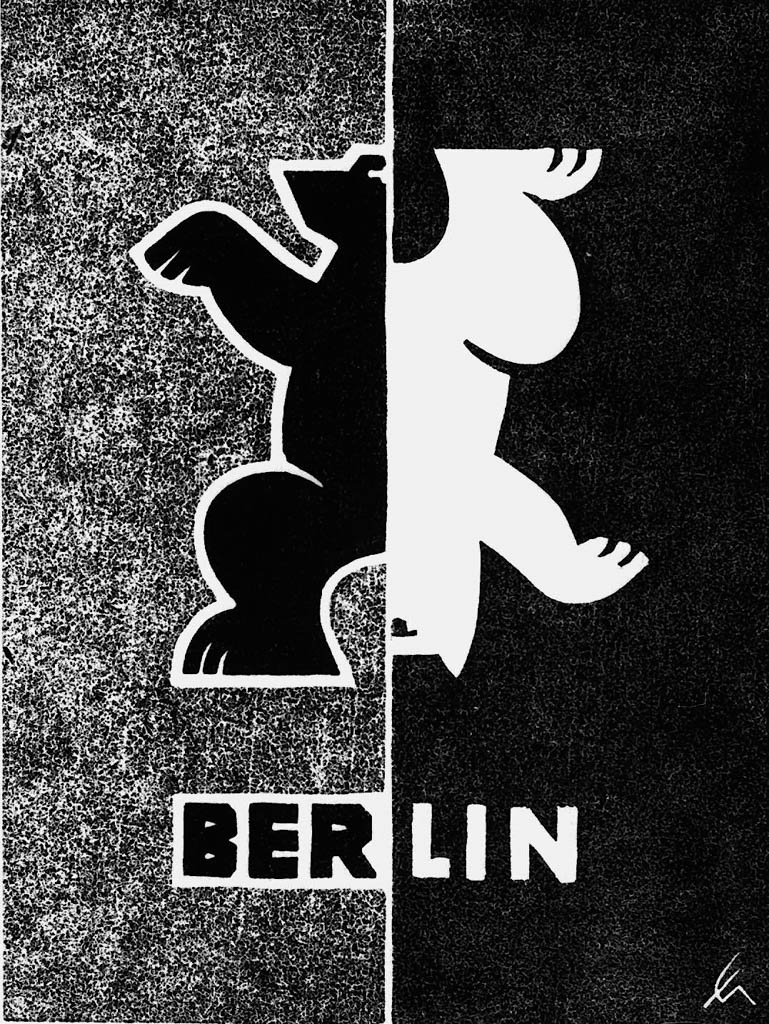
Divided Berlin
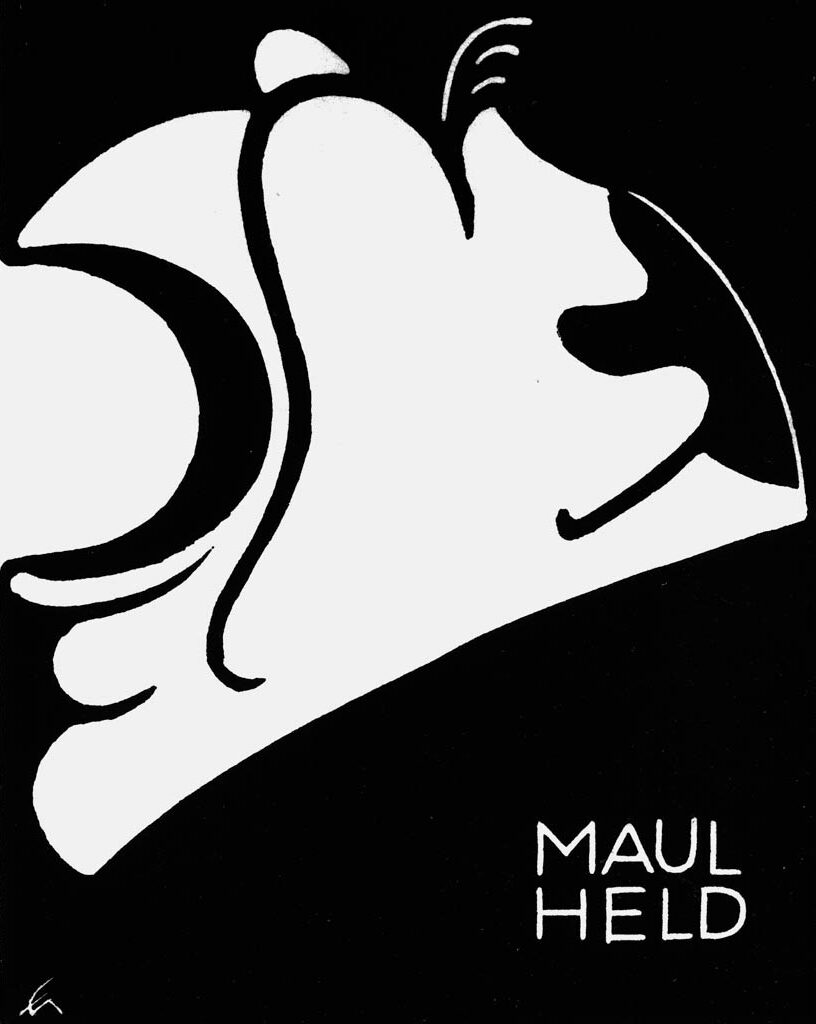
Göring

